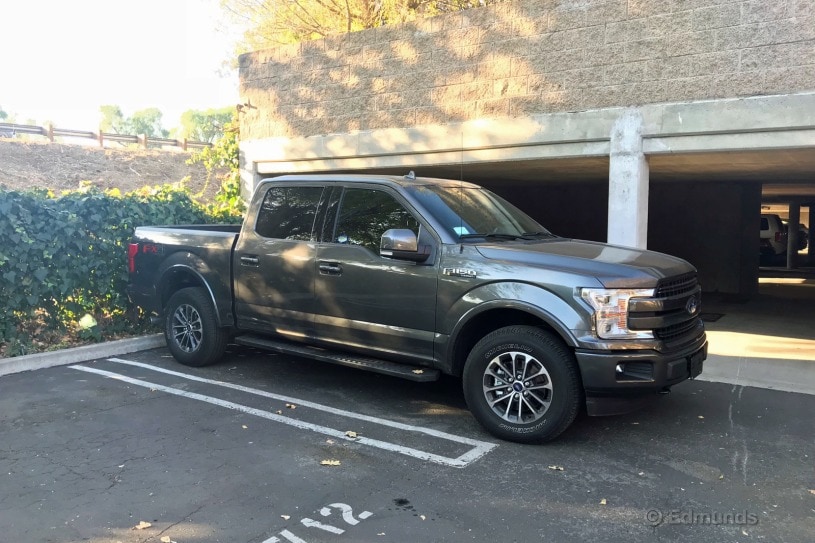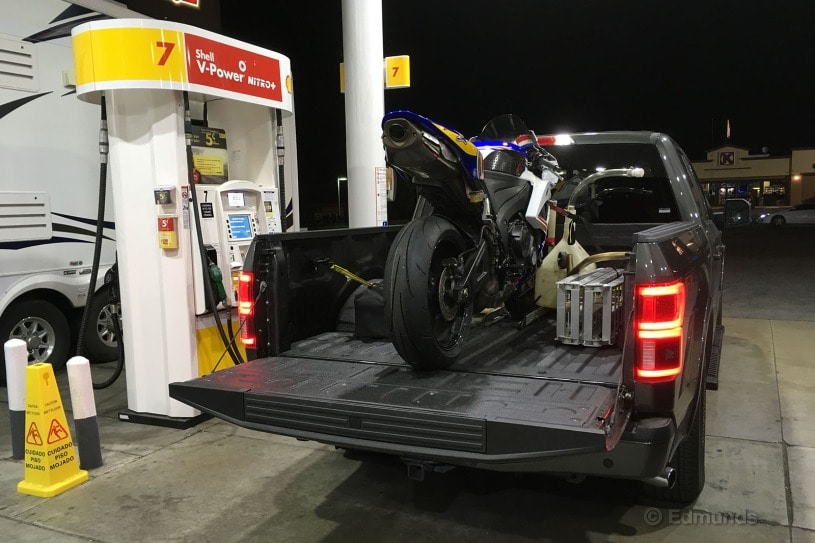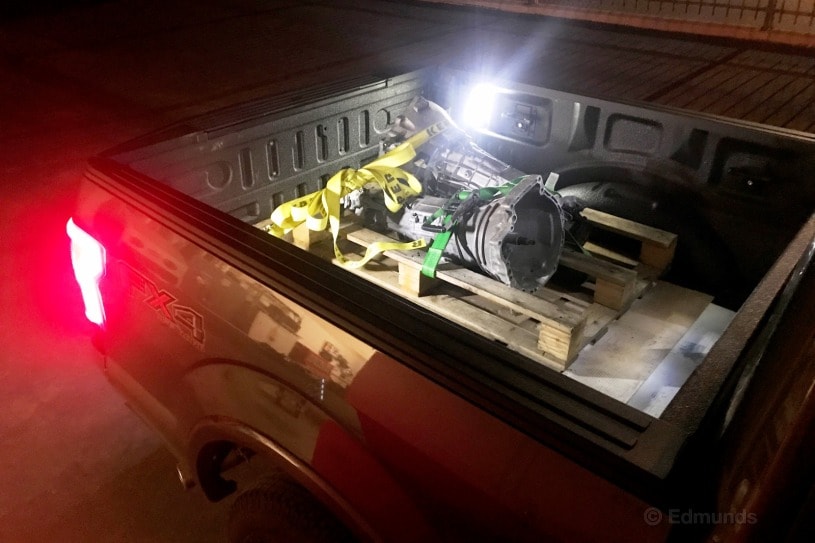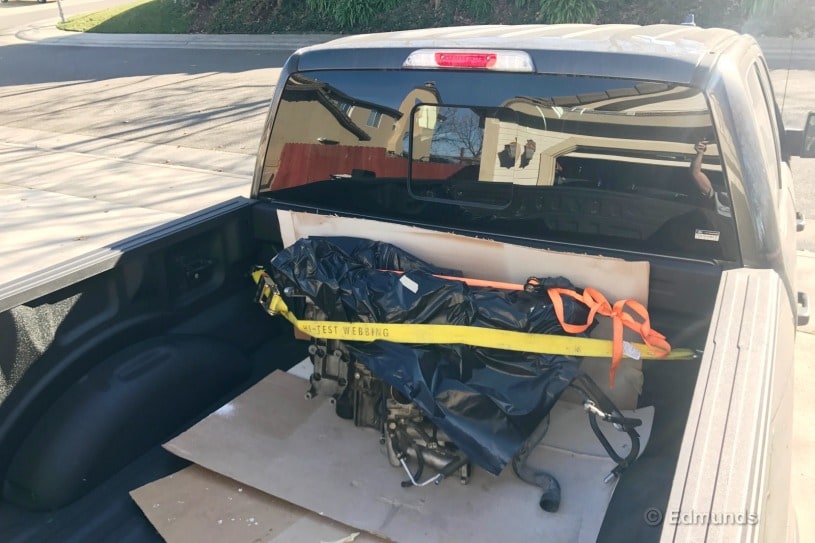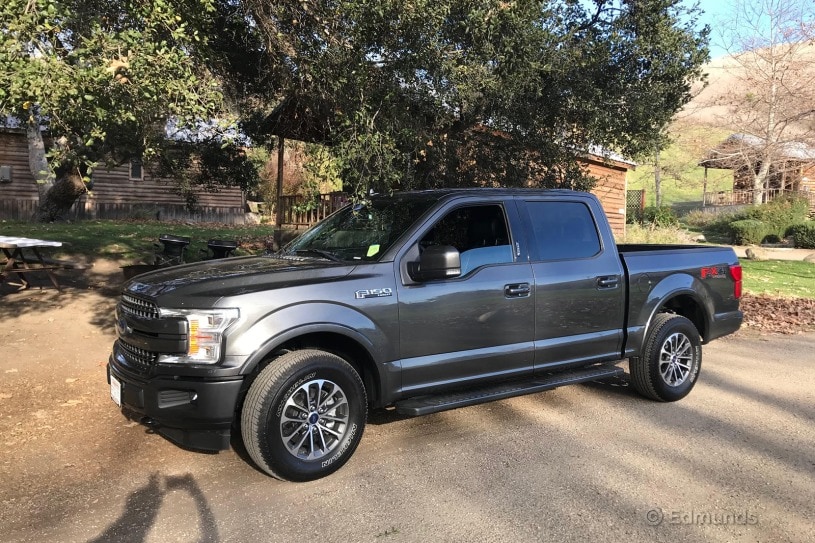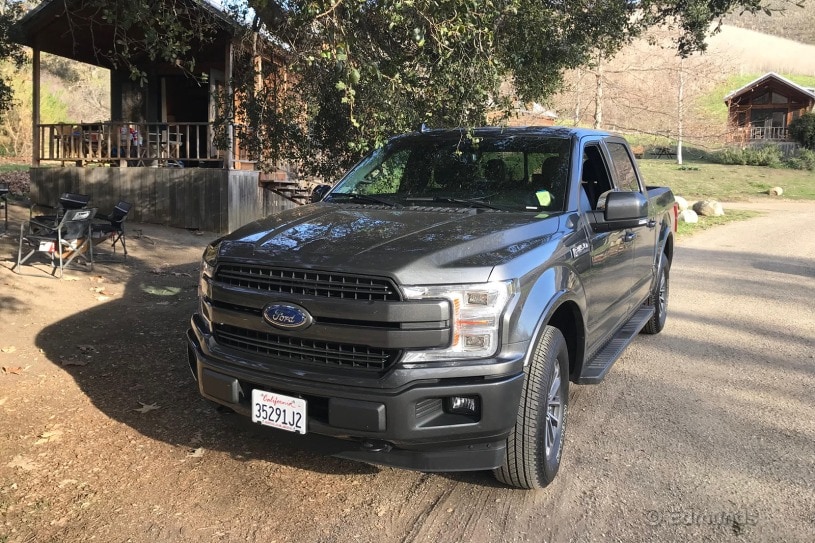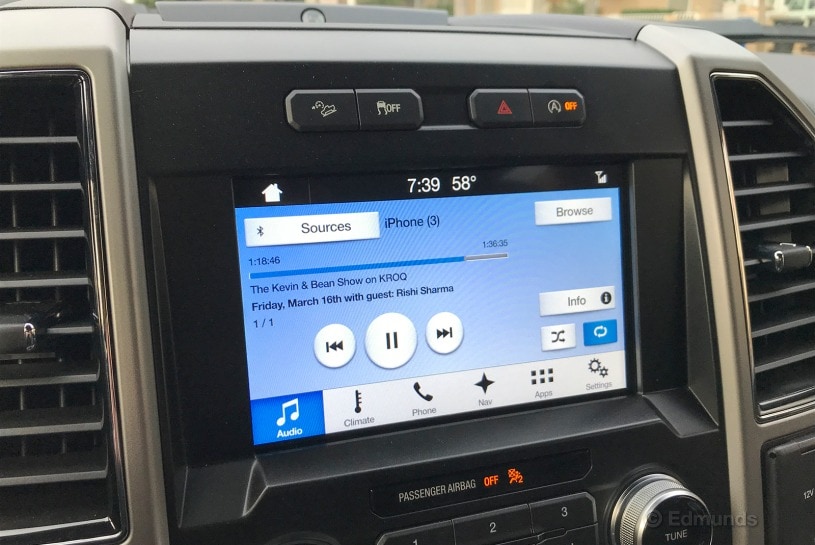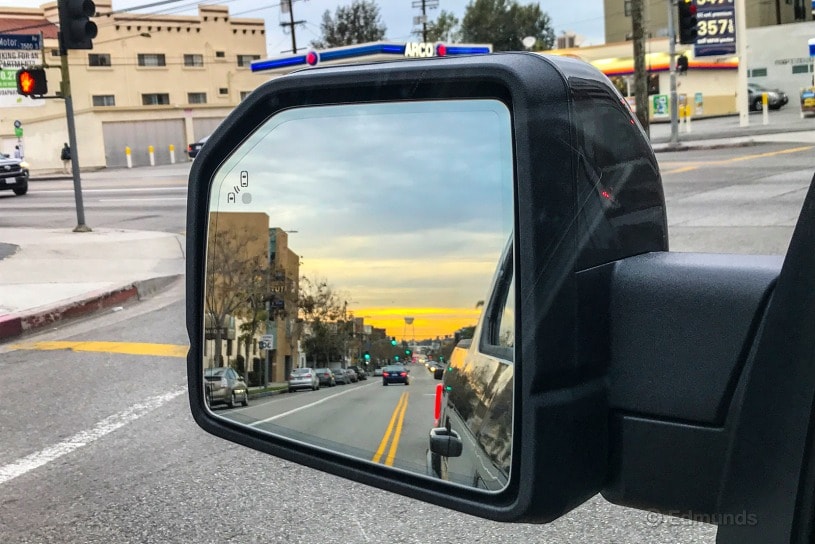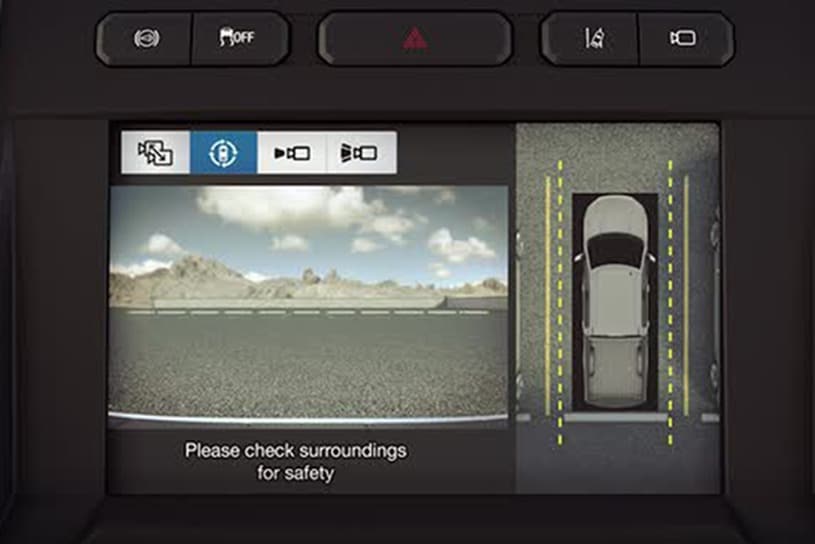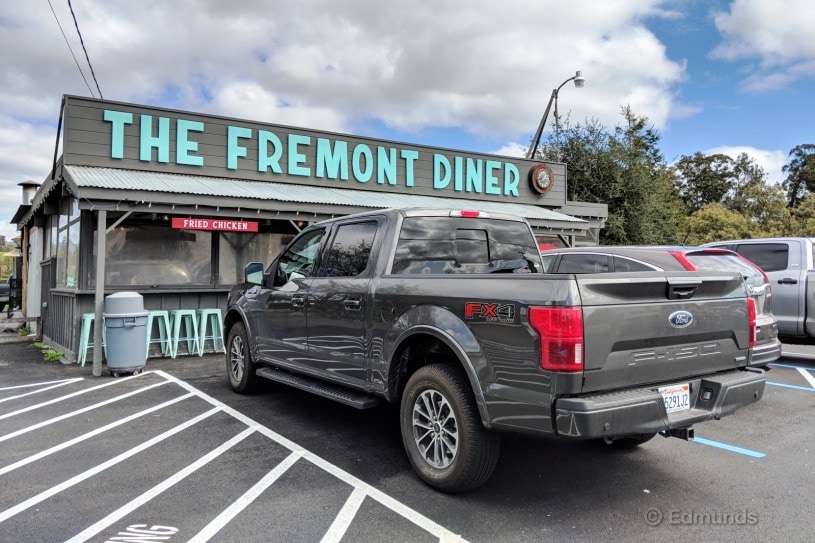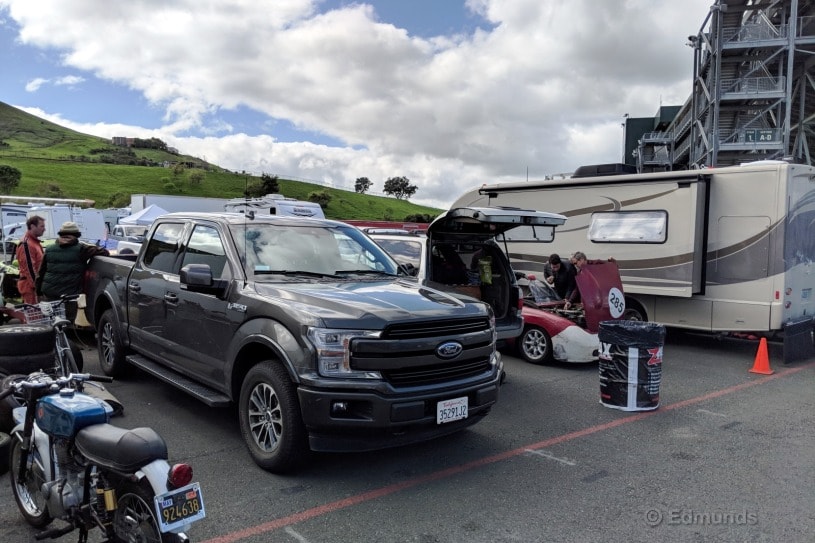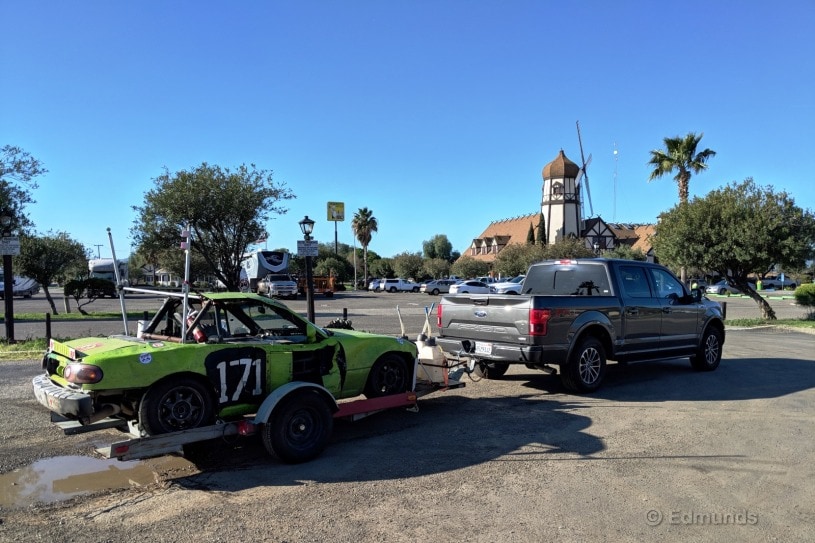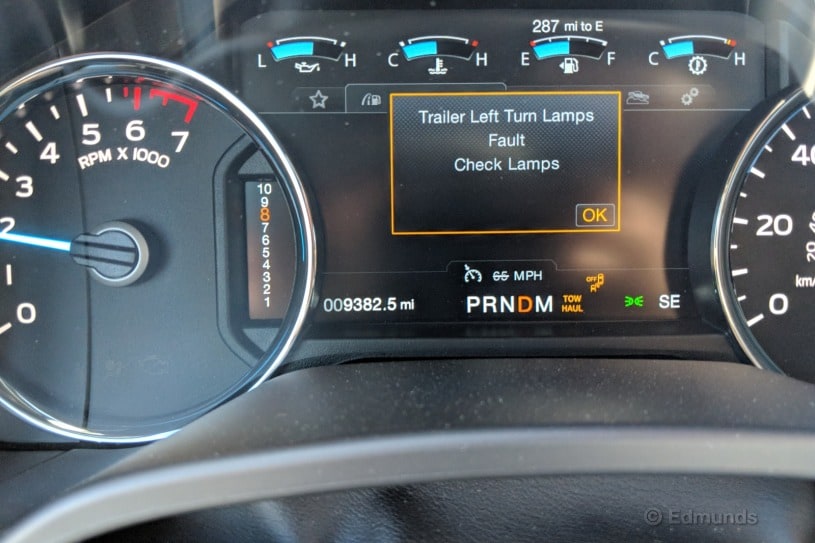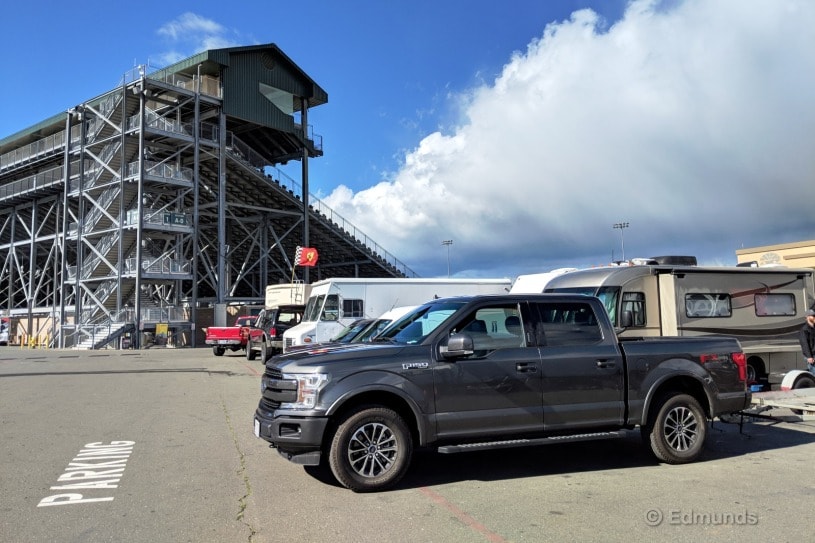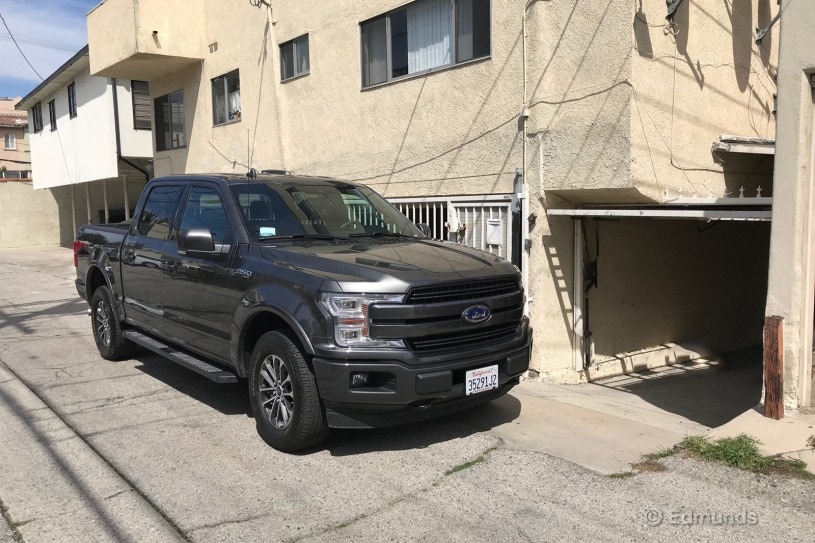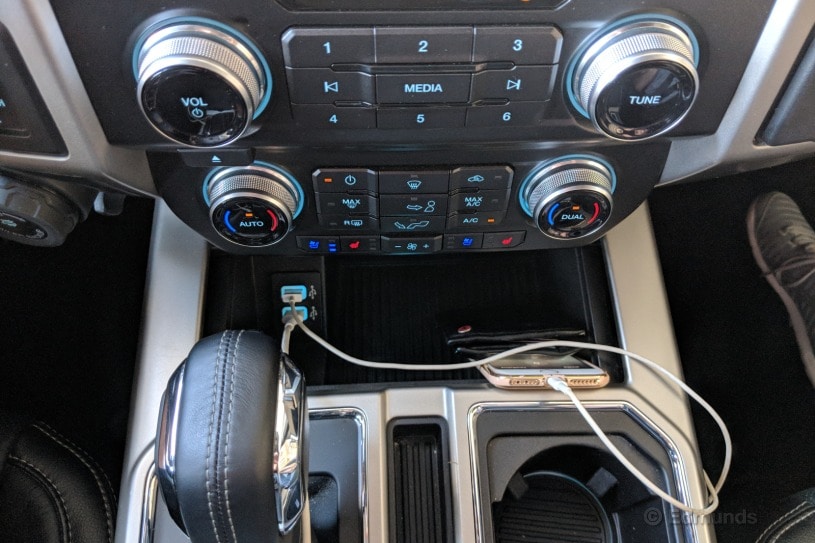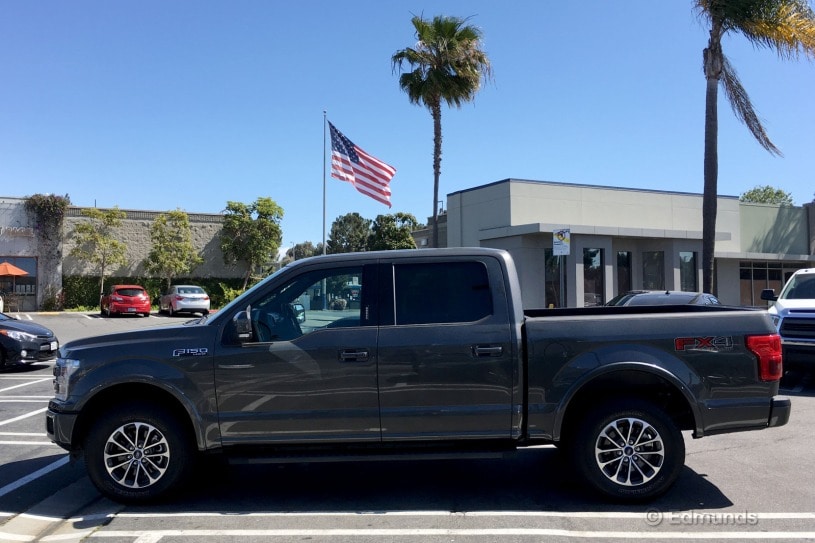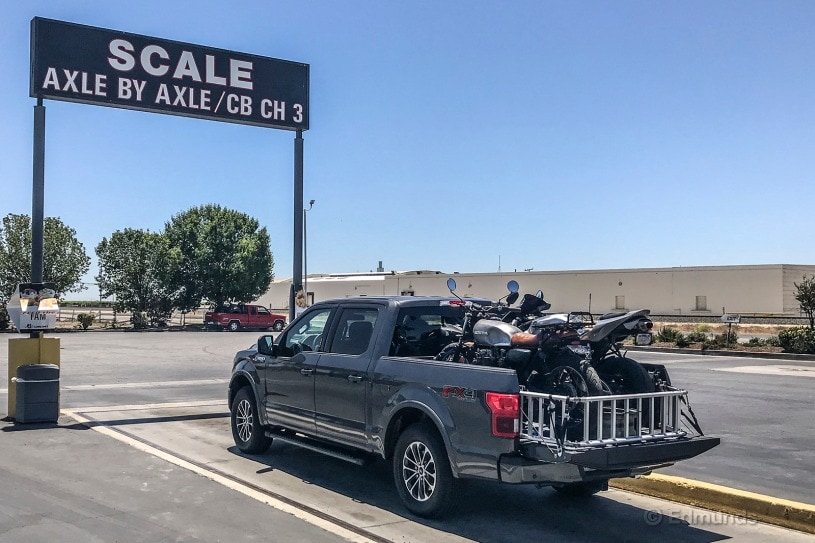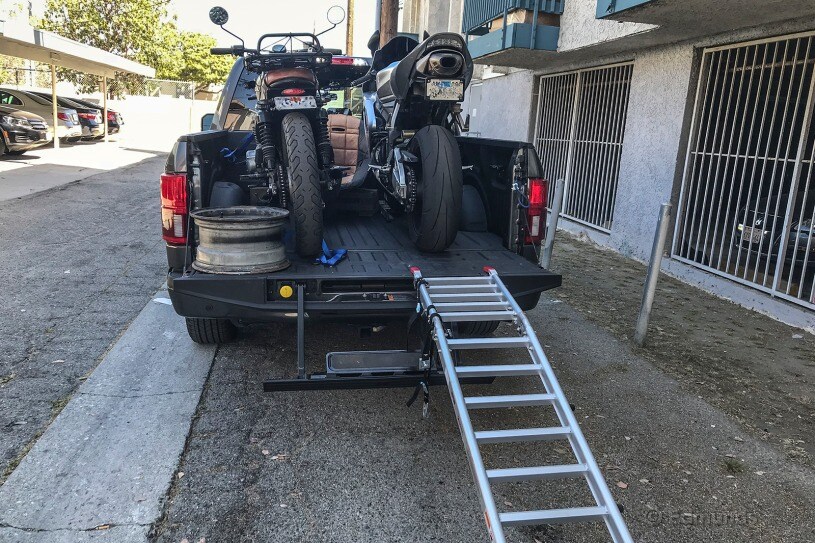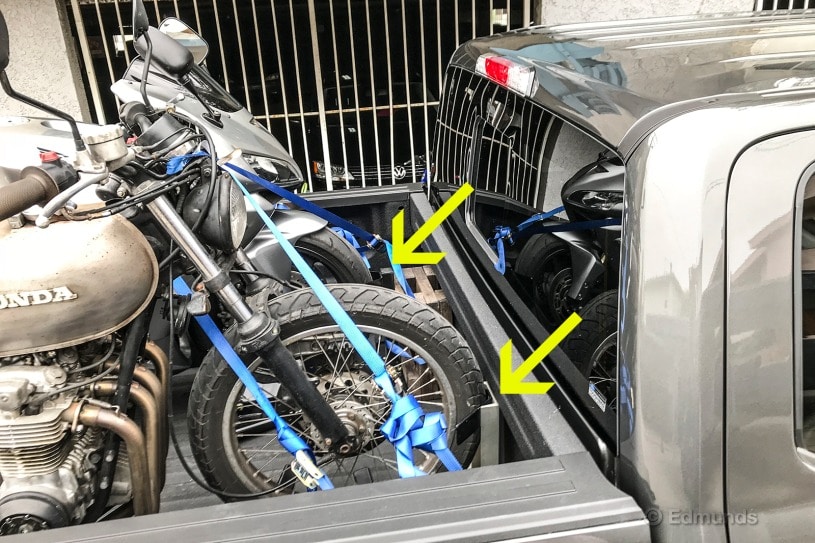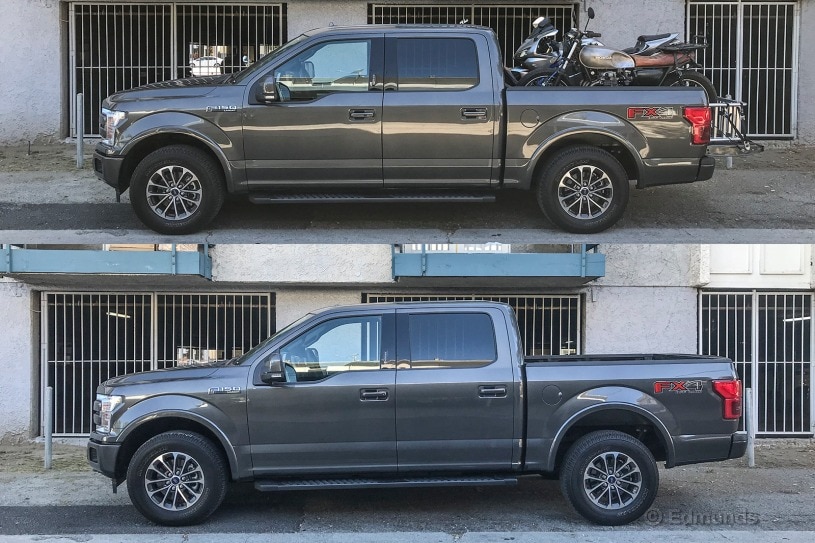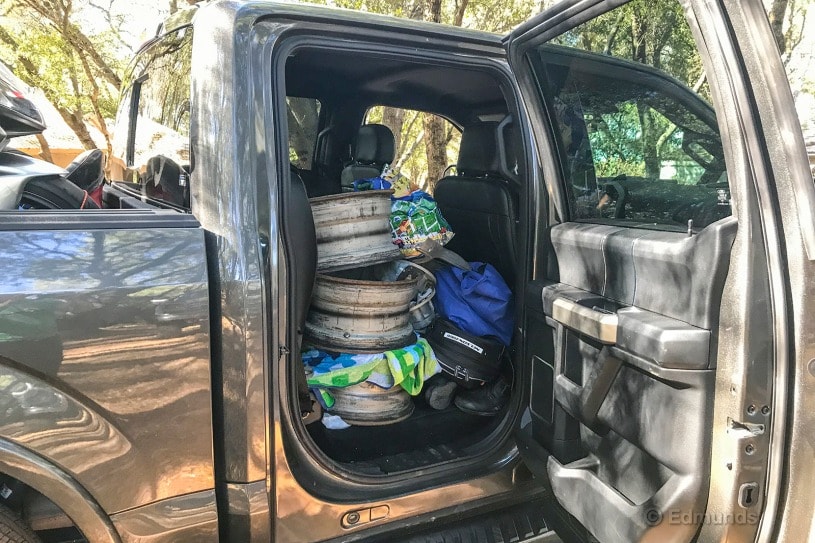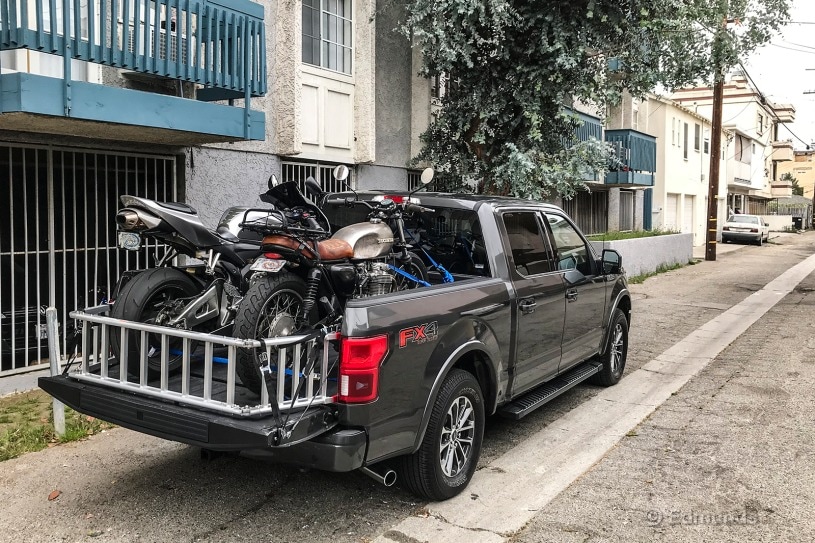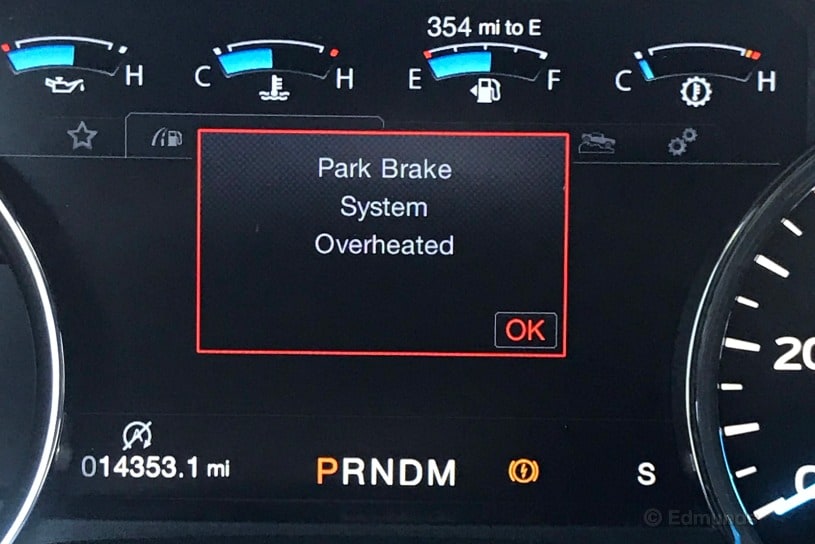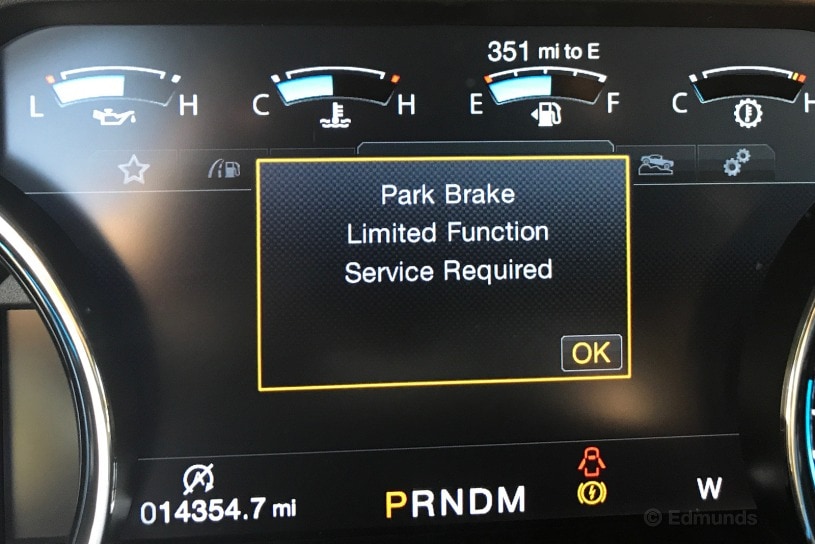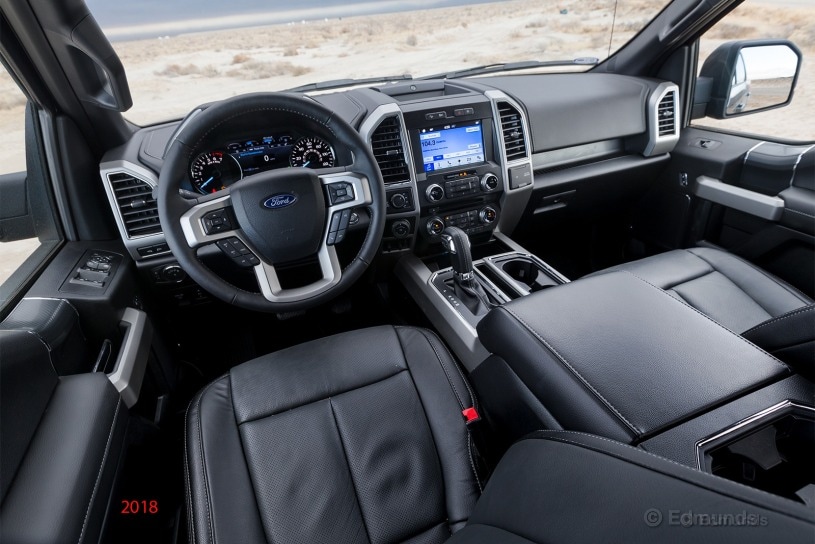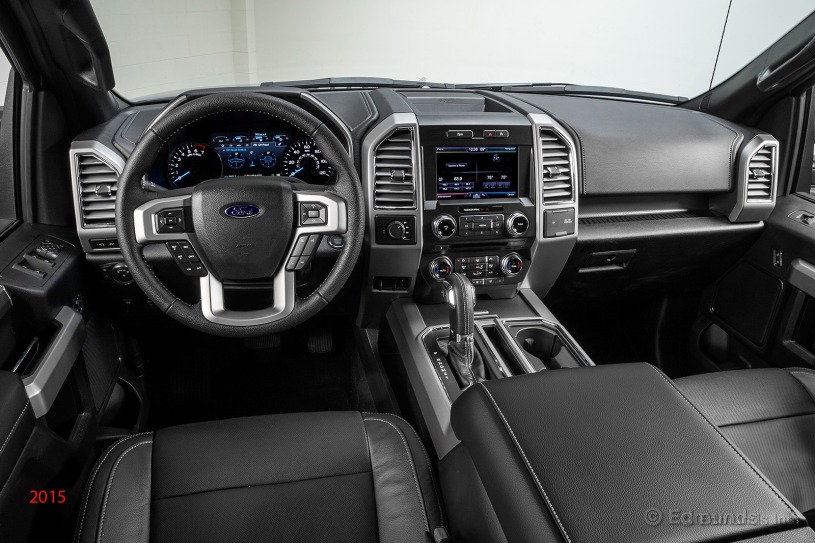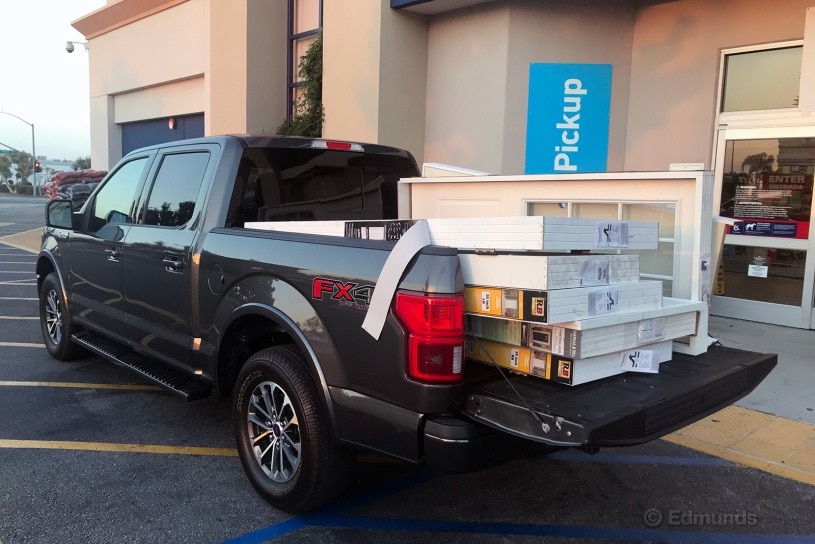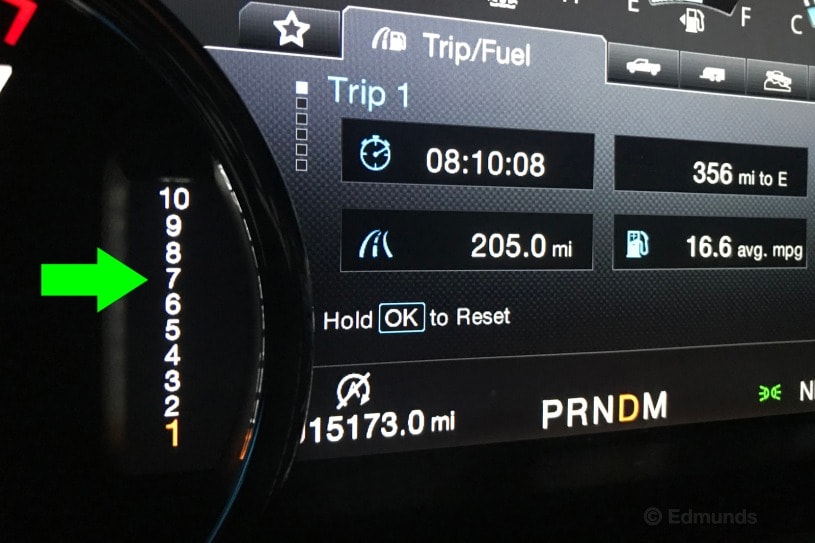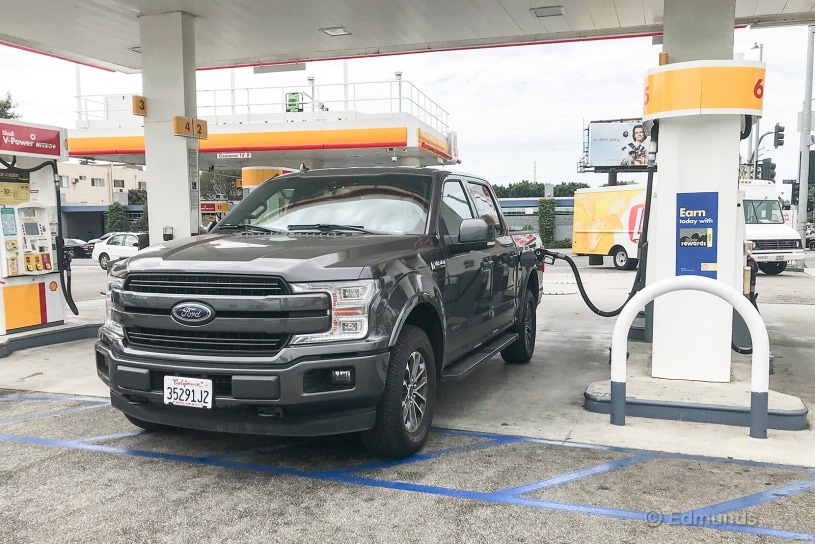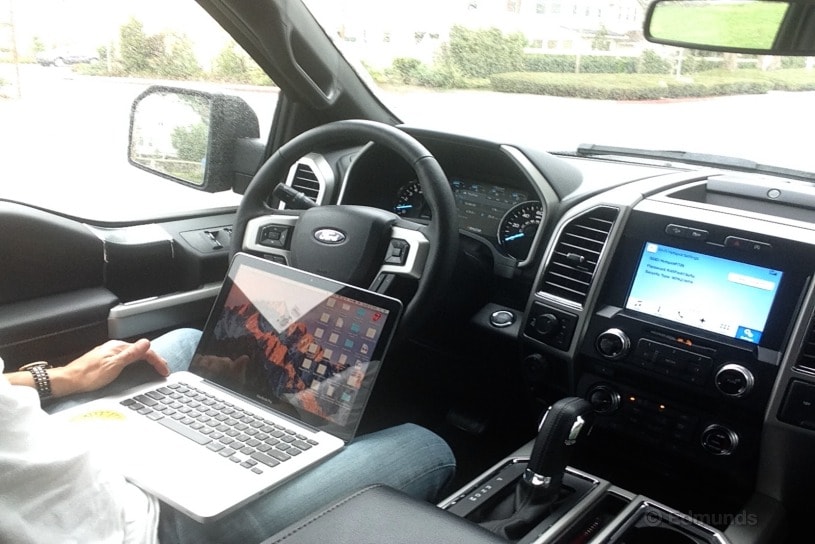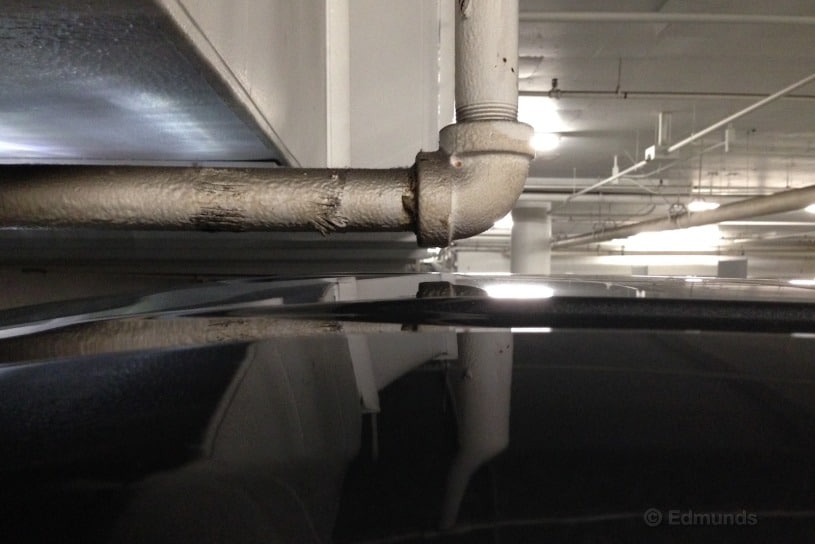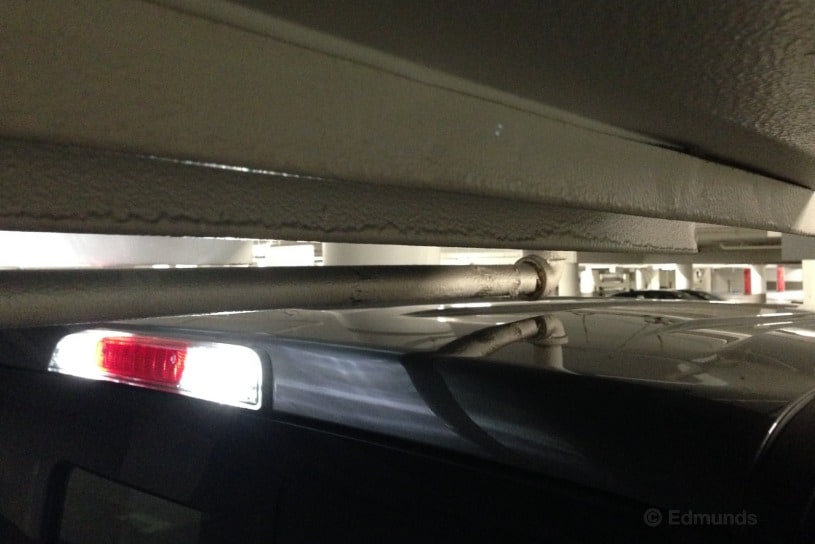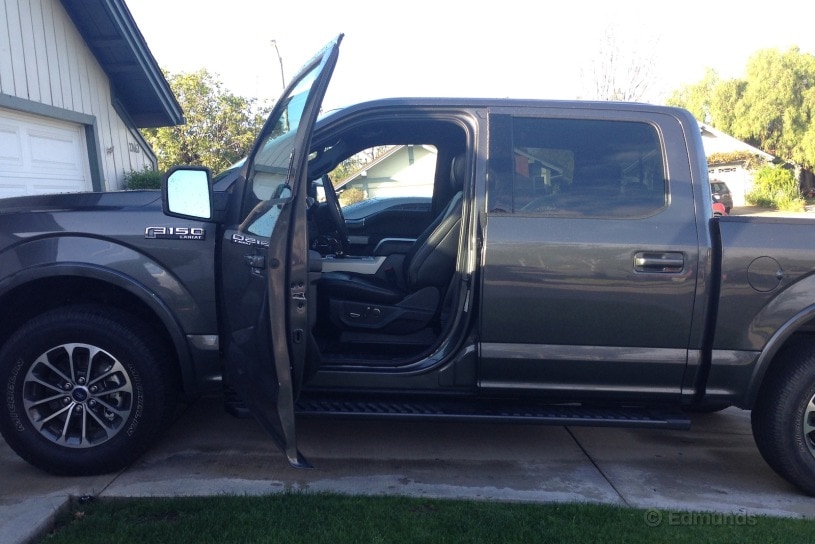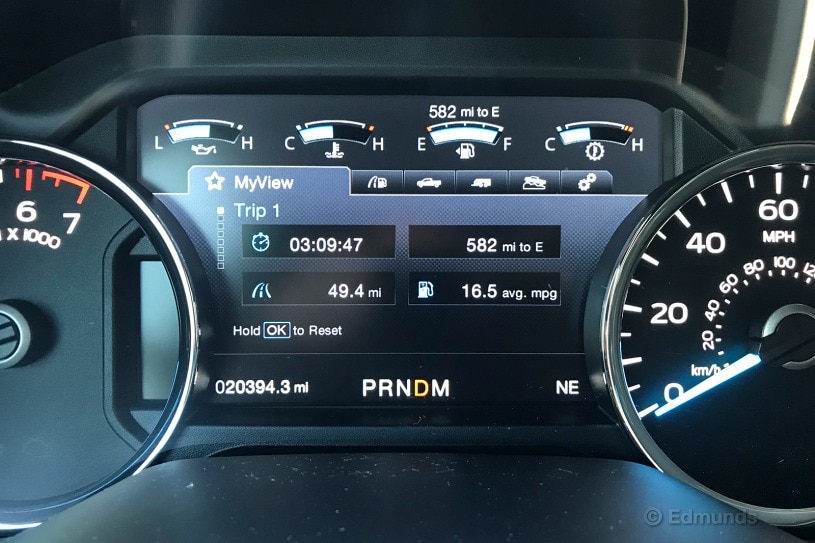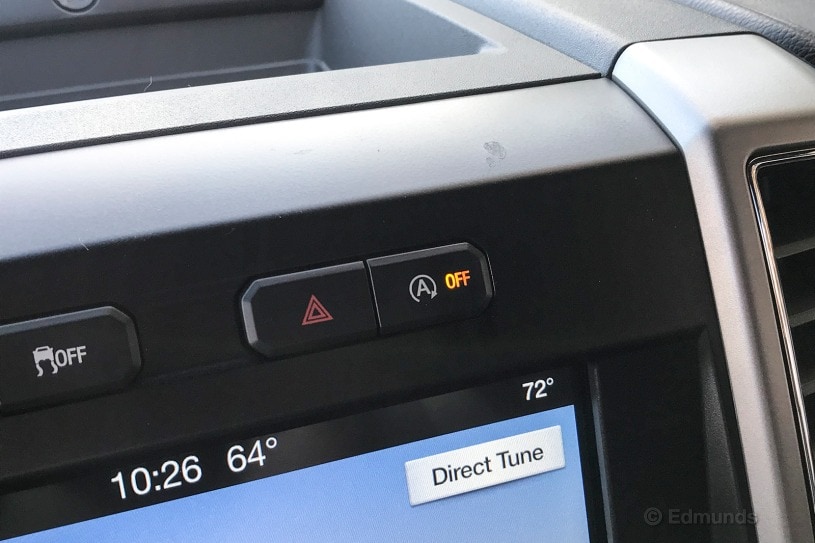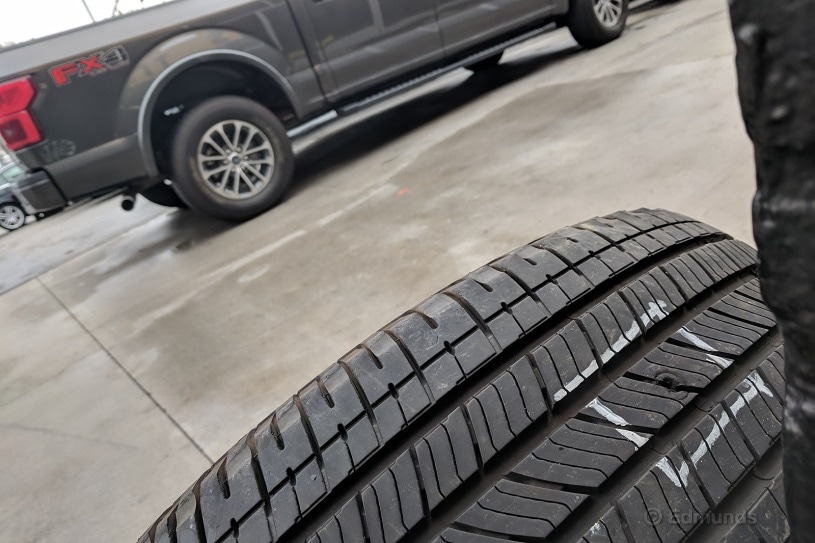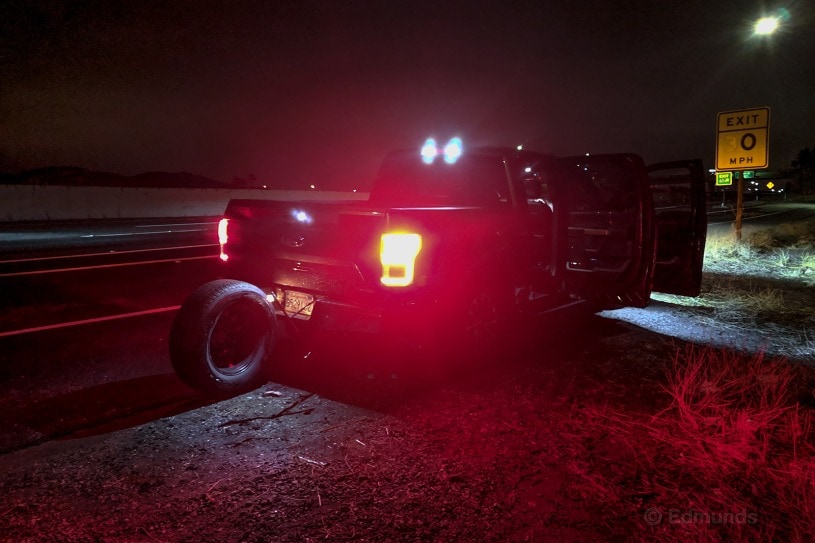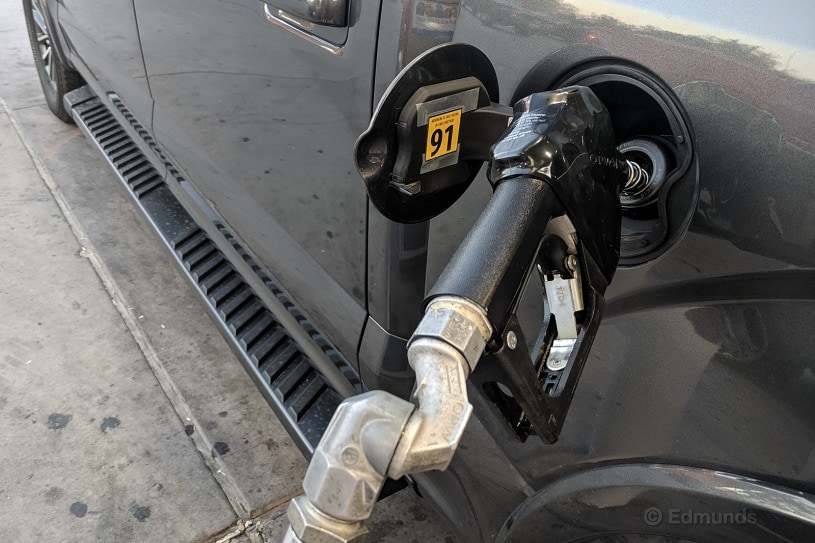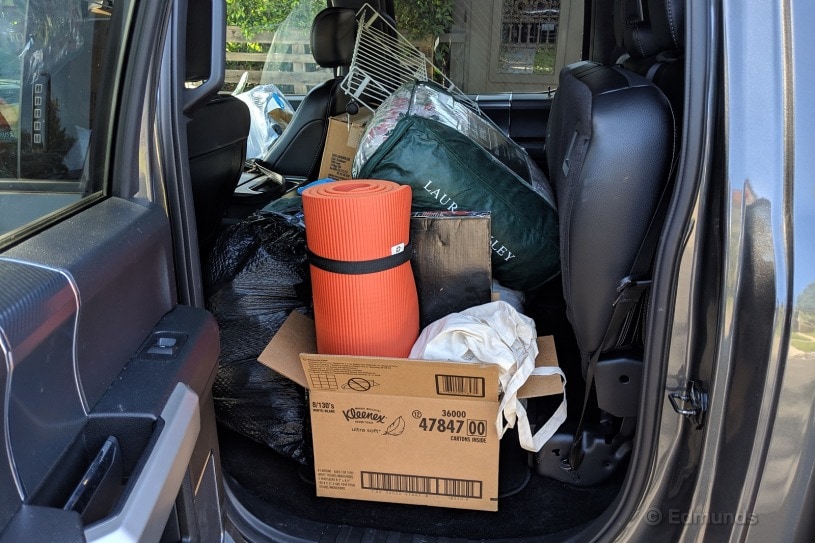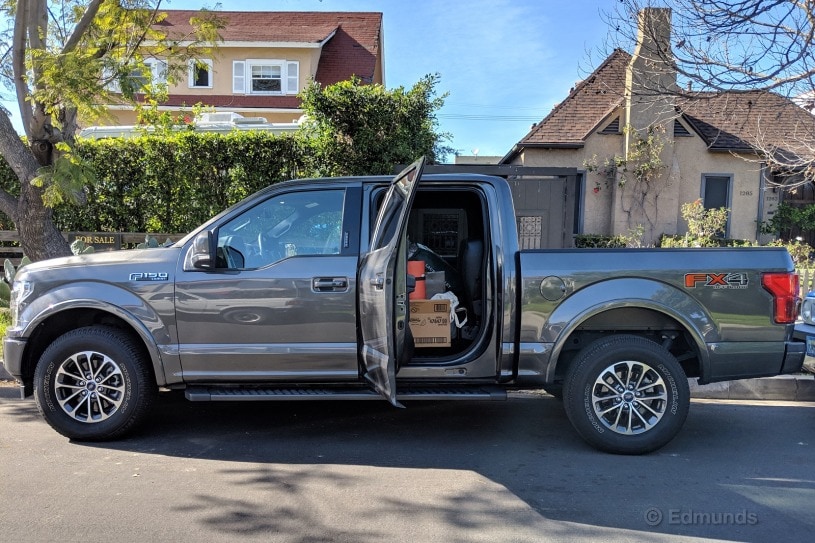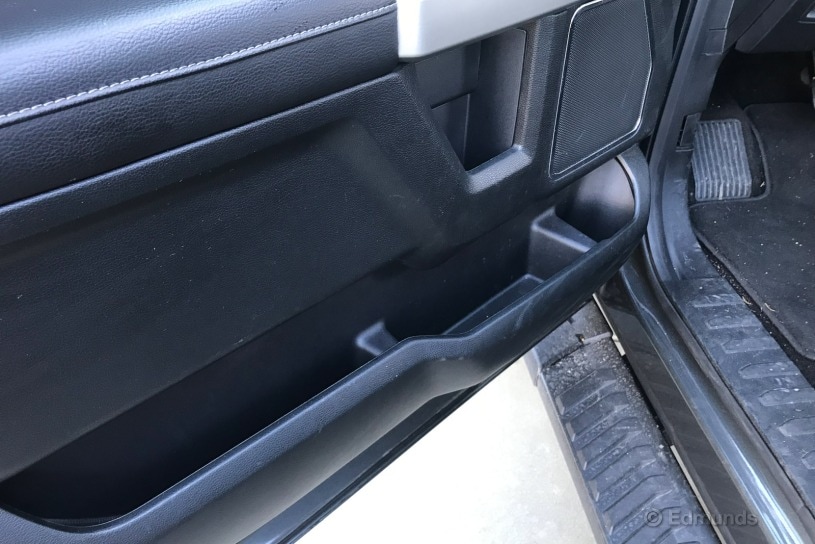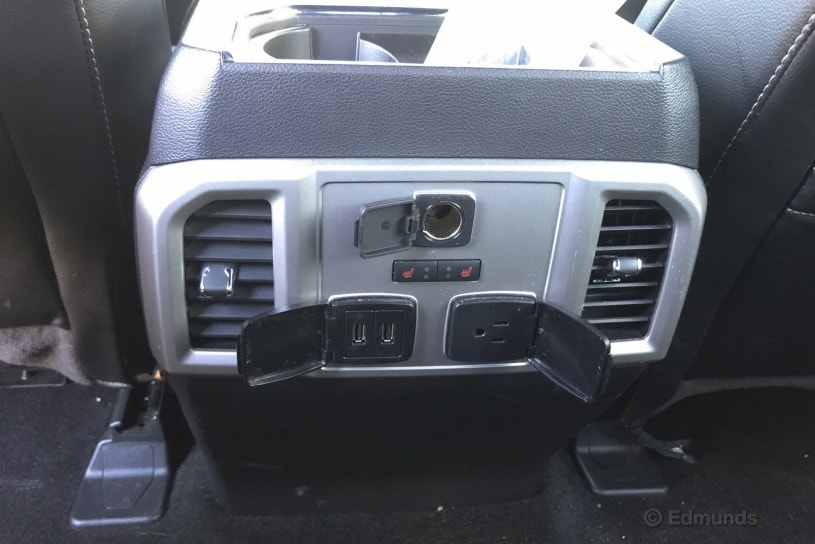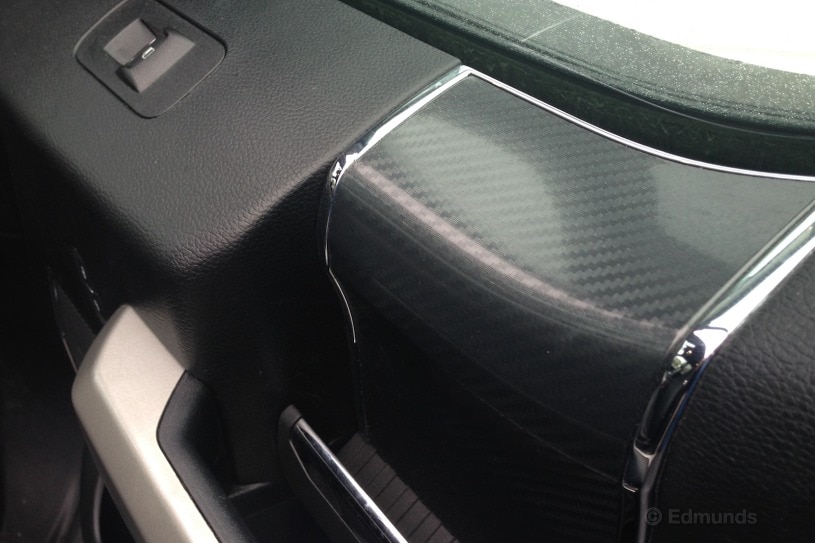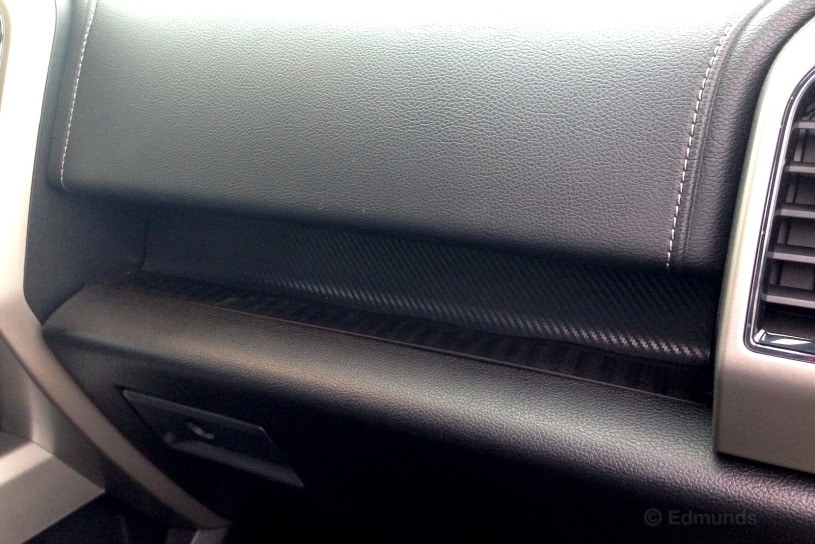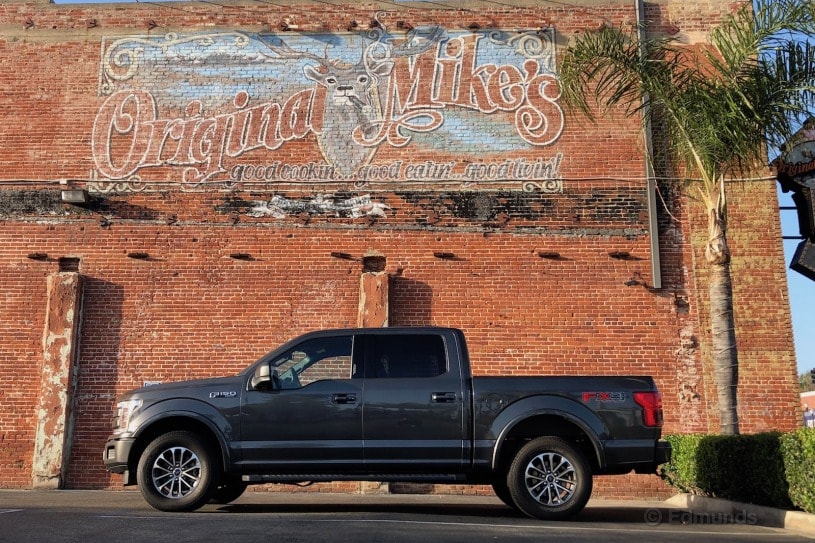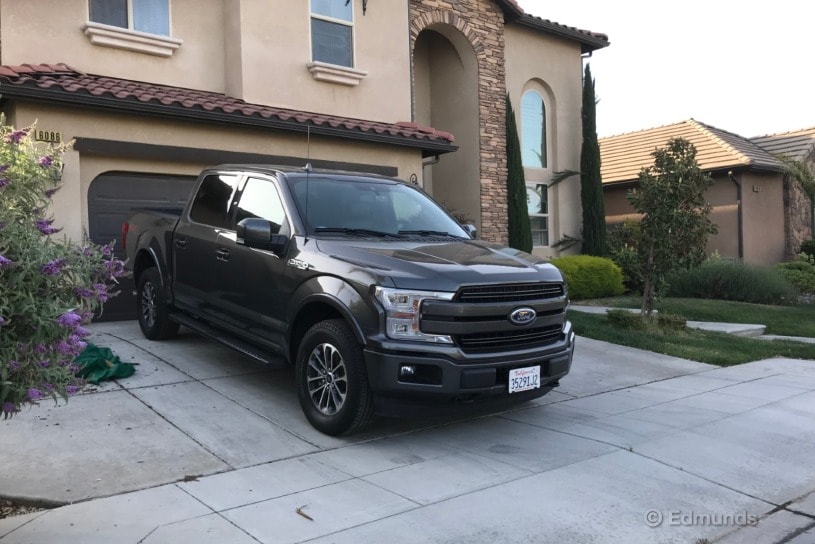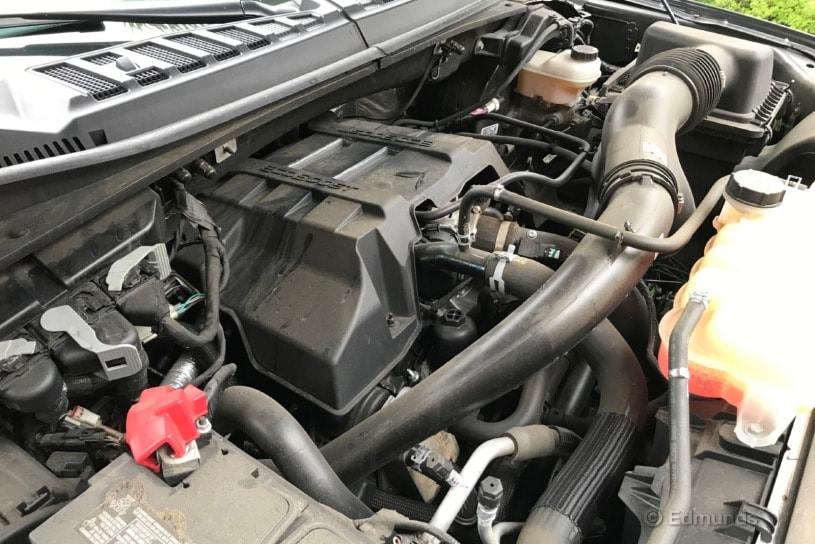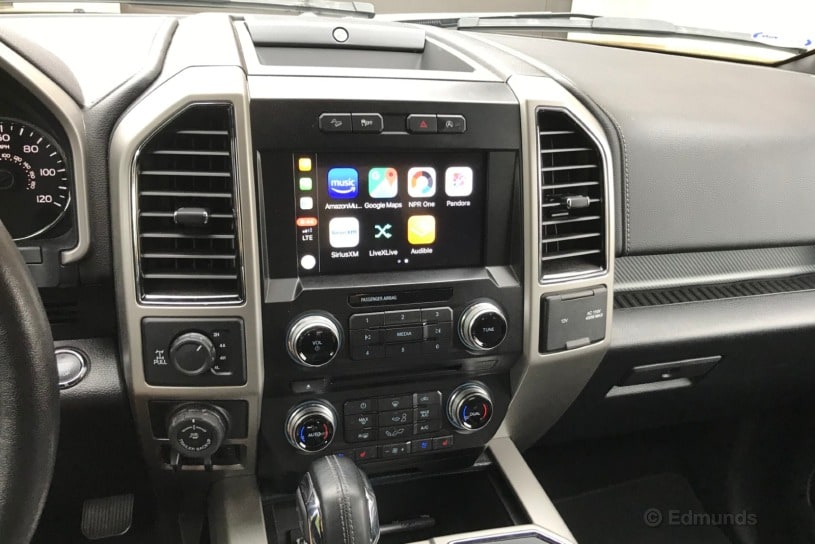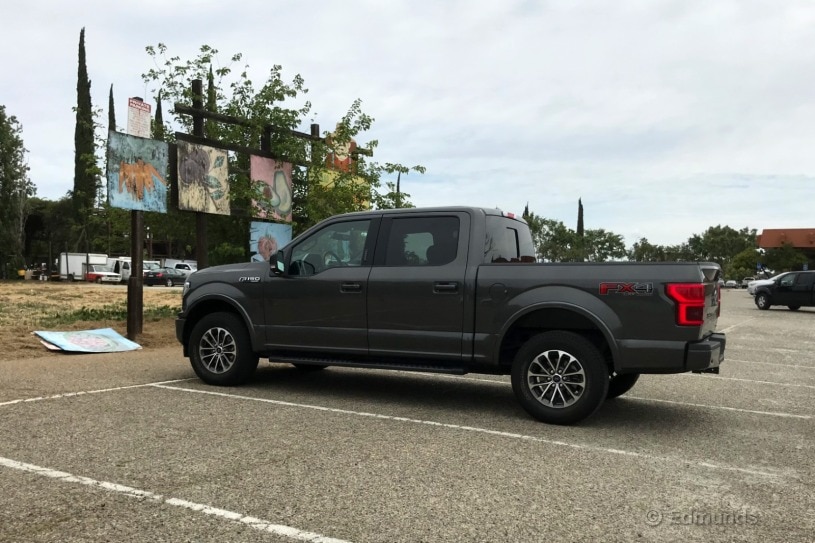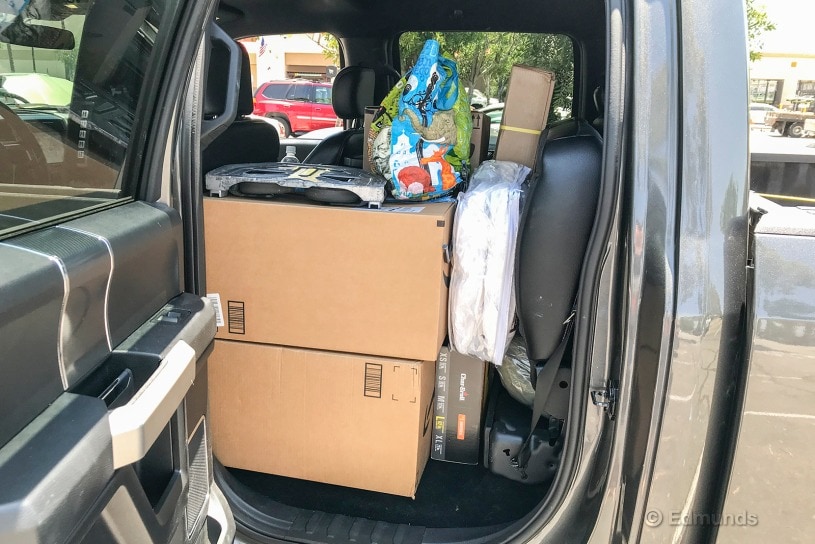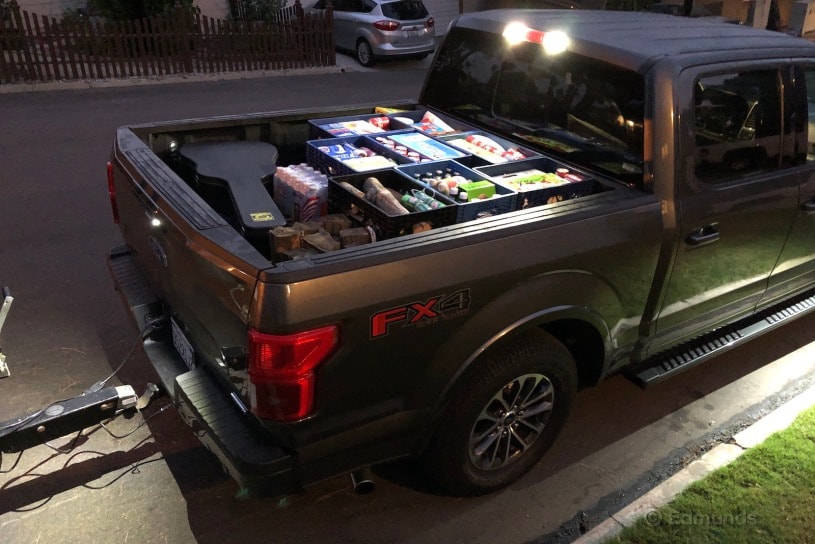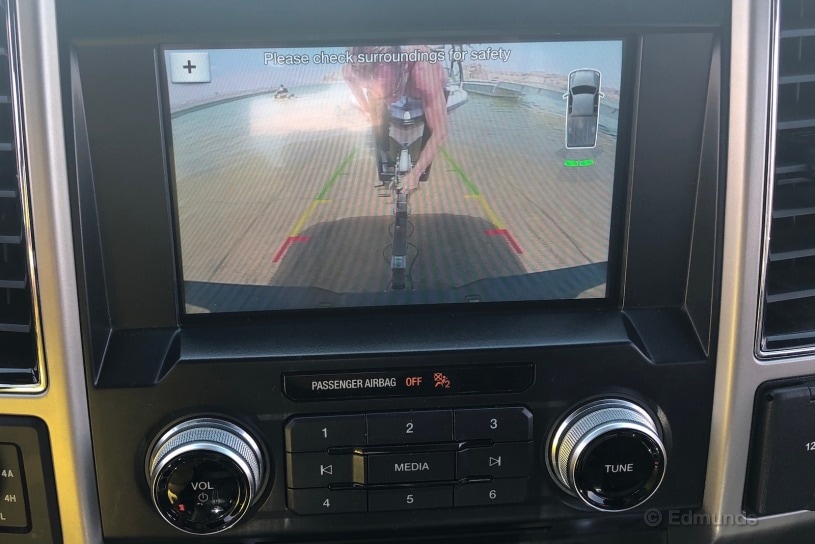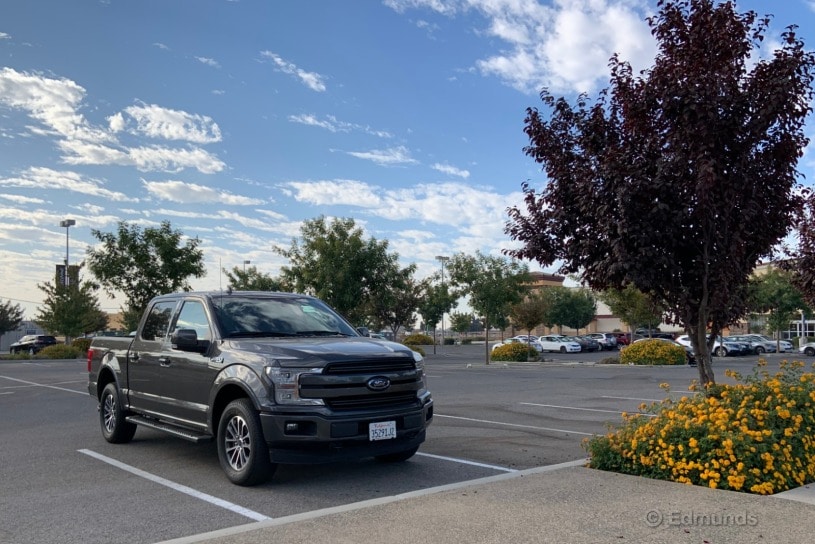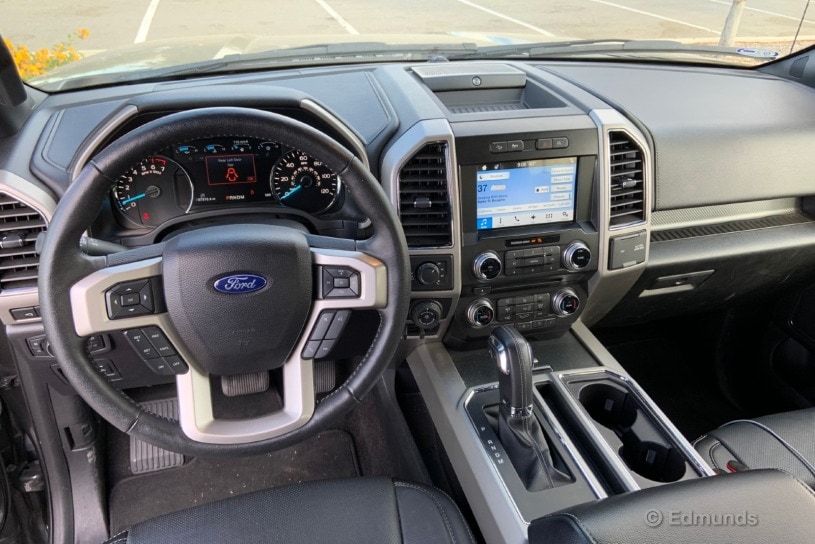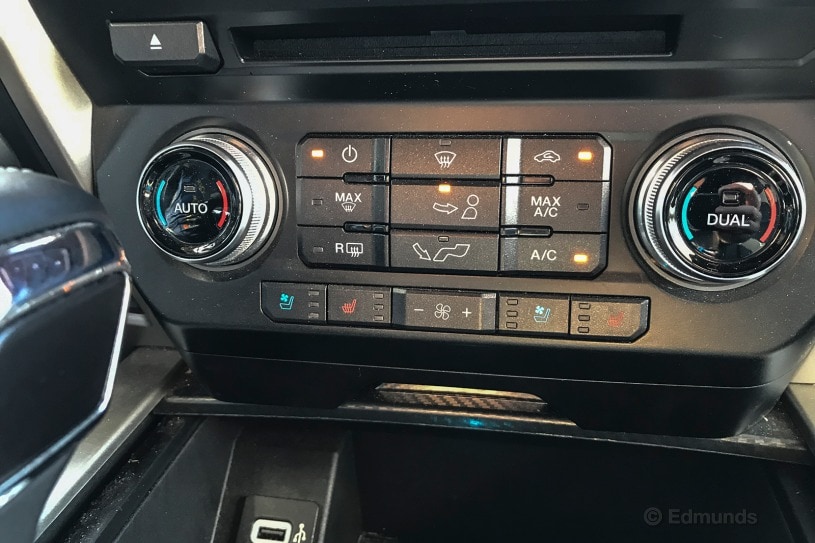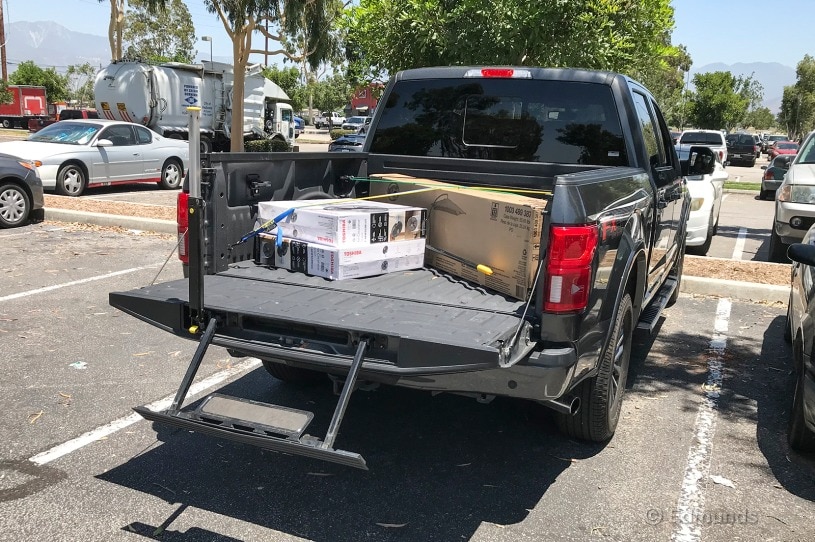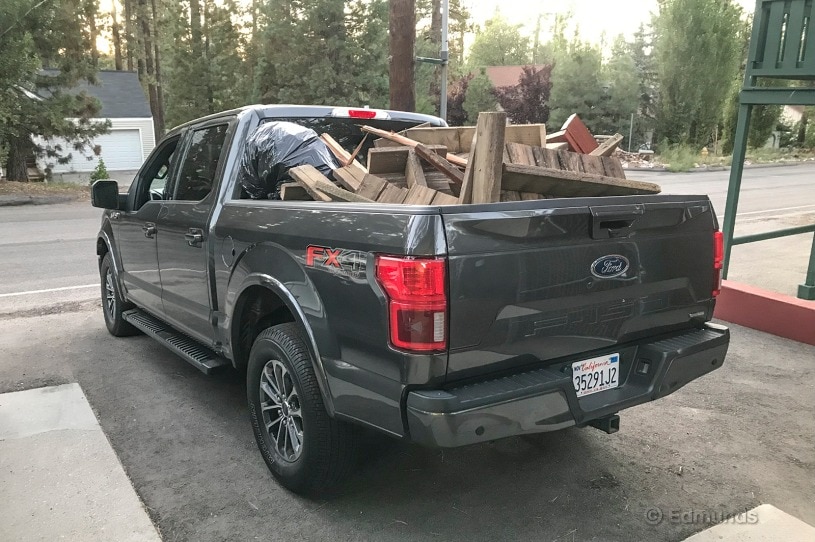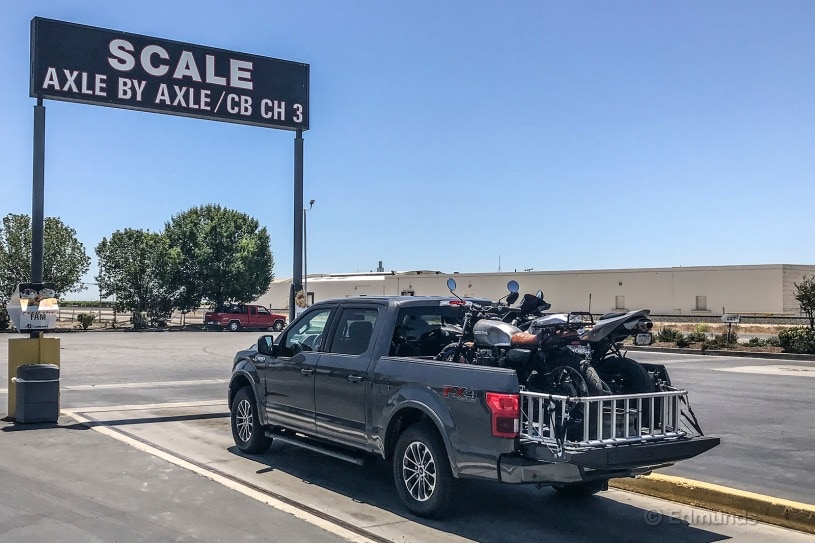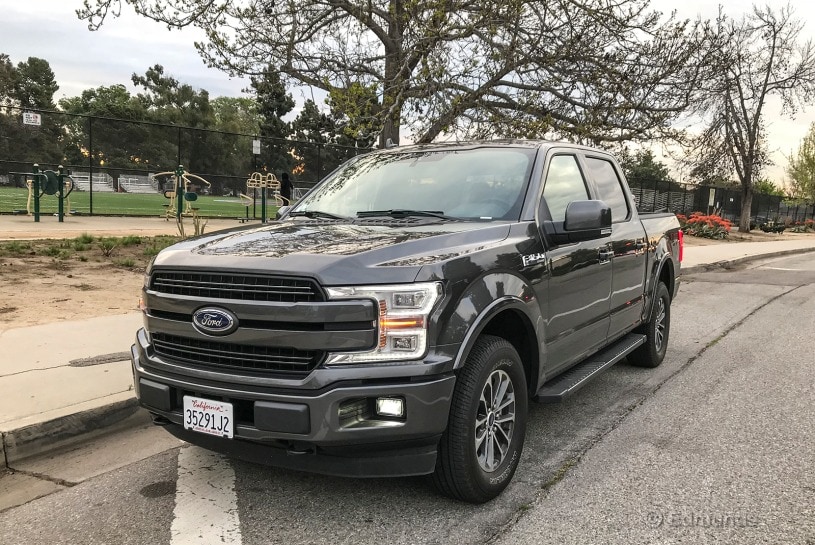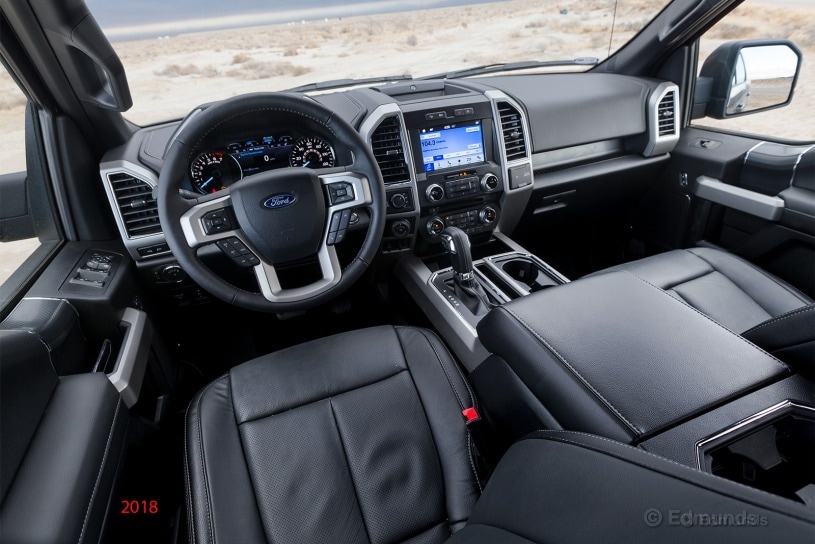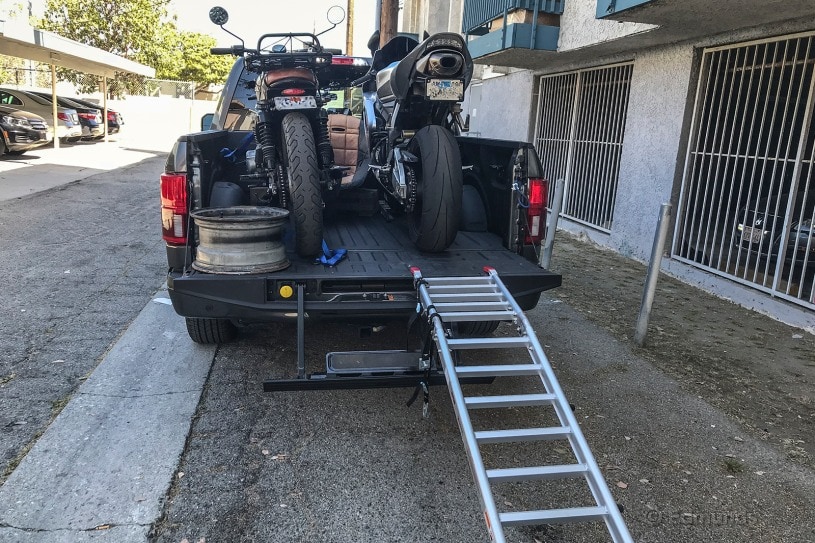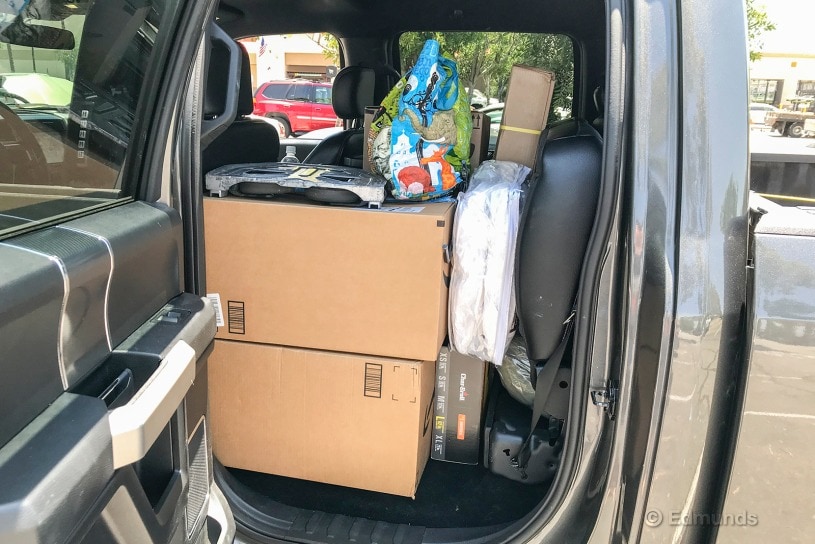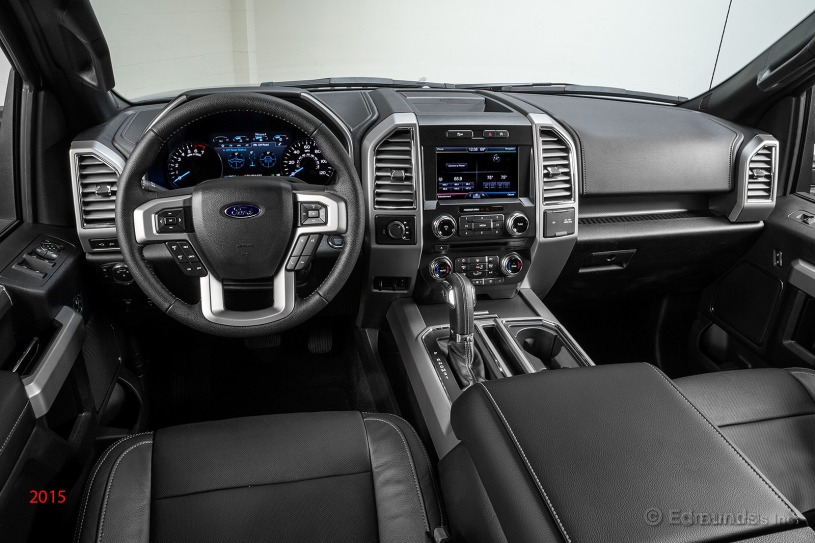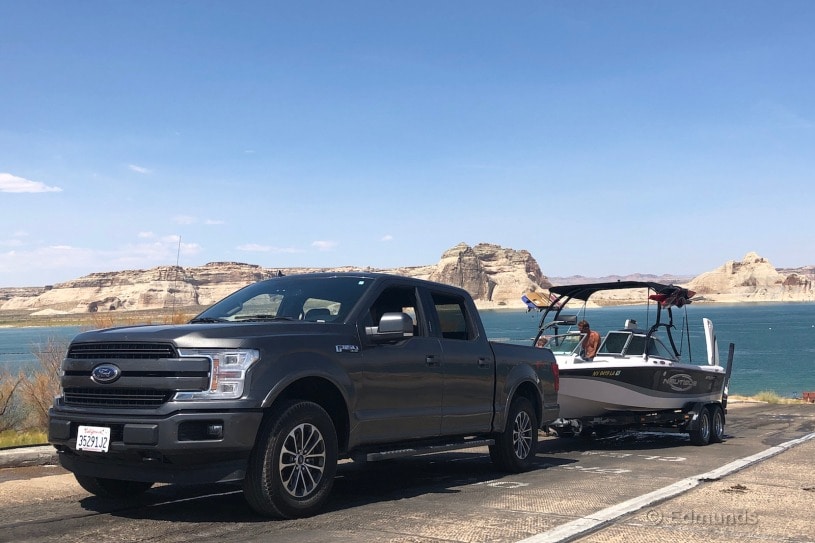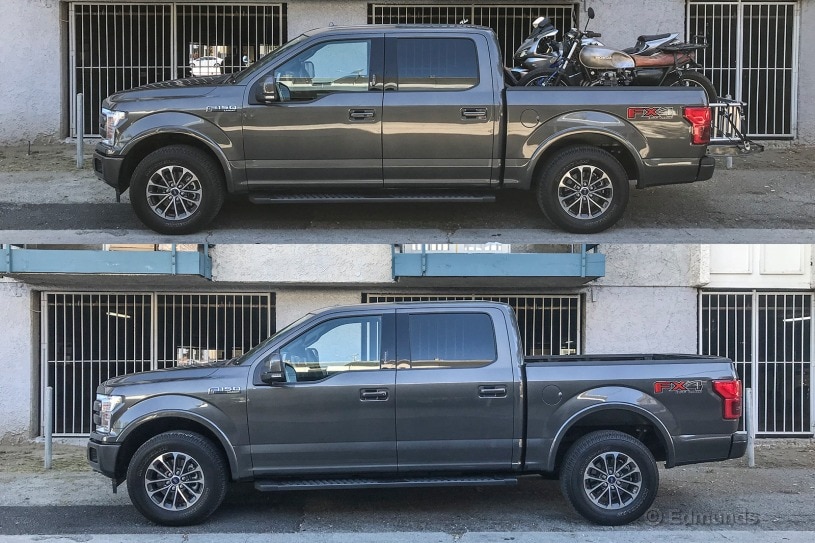2018 Ford F-150: What's It Like to Live With?
We're adding a 2018 Ford F-150 Lariat SuperCrew 4WD with the 2.7-liter EcoBoost V6 engine and 10-speed transmission to our long-term test fleet.
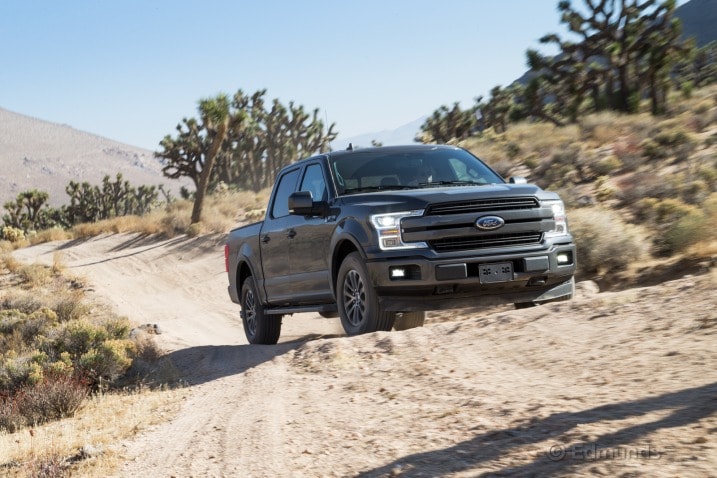
What do you want to know about?
- Introduction
- Monthly Update for January 2018
- Monthly Update for February 2018
- Monthly Update for March 2018
- 360 Split-View Display
- Monthly Update for April 2018
- Monthly Update for May 2018
- Monthly Update for June 2018
- Monthly Update for July 2018
- Monthly Update for August 2018
- Monthly Update for September 2018
- Monthly Update for October 2018
- Monthly Update for November 2018
- Monthly Update for December 2018
- Monthly Update for January 2019
- Monthly Update for February 2019
- Monthly Update for March 2019
- Monthly Update for April 2019
- Monthly Update for May 2019
- Monthly Update for June 2019
- Monthly Update for July 2019
- Monthly Update for August 2019
- Monthly Update for September 2019
- Wrap-Up
Introduction
What Did We Buy?
The 2018 Ford F-150 does not represent a complete redesign, even though it does look slightly different behind its handsome new grille and headlights. Normally, that alone is not enough to provoke a second look at a vehicle we've already hosted in our long-term fleet. But the truck segment is no longer as stagnant as it once was, and the 2018 F-150 offers a collection of unseen improvements and new features we wish we'd had access to when we bought our 2015 Ford F-150 long-term test vehicle.
Since then, the 2017 F-150 debuted an improved turbocharged 3.5-liter V6 — two versions, in fact, because the off-road Raptor variant received a high-output version — and a 10-speed automatic transmission. This year Ford has made similar upgrades to the turbocharged 2.7-liter V6, and the 10-speed is now standard on everything except the 3.3-liter V6 base engine (which is also brand-new this year). Fuel economy ratings are up, as are power, torque and maximum towing capacity.
Except for disappointing real-world fuel economy, we were big fans of the original direct-injected turbo 2.7-liter EcoBoost V6 we had in our first truck. It made a healthy 325 horsepower and 375 pound-feet of torque and was rated at 20 mpg combined (18 city/23 highway). This revised 2018 version uses port and direct fuel injection, and the turbochargers are made from alloys that can resist higher temperatures. The upshot is 325 hp, a full 400 lb-ft of torque, and a rated fuel economy that's 1 mpg higher across the board. We had to have one.
There are numerous feature-level improvements we wanted to buy and try as well, but in building out this truck we didn't want to stray too far from the 4WD crew-cab template we used last time. Our goal was to spec out a truck that we could reasonably compare to our past 2015 Ford F-150 experience.
What Options Does It Have?
The least expensive regular cab, two-wheel-drive 2018 Ford F-150 costs $28,675 when you include the mandatory destination charge that is absent from the advertised price. But we wanted a 4WD crew cab with a 5.5-foot bed, and the floor level for that configuration is $38,725 in XL trim. But XL is a base trim meant for work trucks. Above that, Ford offers XLT, Lariat, King Ranch, Platinum and Limited trim levels, with the Raptor off on a pedestal of its own.
For our money, the Lariat 4WD is the nicely trimmed sweet spot. For $48,265, it comes standard with the turbo 2.7-liter V6 and 10-speed automatic we wanted. Inside it's got heated and ventilated front seats, leather upholstery, power-adjustable pedals, a tilt-and-telescoping steering wheel, dual-zone automatic climate control, smart entry with push-button start, Sync 3, satellite radio, and Apple CarPlay and Android Auto support. It also comes with 18-inch wheels, halogen foglights, power-folding heated mirrors with turn signals, LED cargo box lamps, removable cargo tie-downs, and a Class IV trailer hitch with four-pin and seven-pin trailer harness connectors.
We wanted to sample the more interesting Lariat options, so we ordered the 502A Lariat Luxury package ($7,335). Everything in the midlevel 501A package is here: blind-spot monitoring with trailer awareness, remote start, remote tailgate release, reverse proximity sensors, LED mirror spotlights, and a 110-volt outlet good for 400 watts. Added 502A extras include auto-dimming LED headlights, LED foglights, rain-sensing wipers, bucket front seats with a center console, heated rear seats, and a heated steering wheel with power tilt-and-telescoping and memory function. The infotainment system gains touchscreen navigation and a Bang & Olufsen 10-speaker premium audio system.
The hefty 502A price is deceiving because it triggers an automatic $1,500 discount. It also includes $1,695 worth of the elements contained in the Chrome and Sport Appearance packages, mostly added side-step bars and upgraded wheels, grille and mirror housings. The Sport package we selected usually costs $1,995, so we paid $300 instead.
We also bought the FX4 Off-Road package ($770) for its hill descent control, skid plates and an electronic locking rear differential. This triggered a discount on a separate upgrade from 3.55 standard axles to 3.73 axles with a locking rear differential. We paid $100 instead of $570 because the electronic locking portion was covered by the FX4 package.
Finally, we selected the Trailer Tow package ($995) for its upgraded transmission cooling, a beefier front stabilizer bar and the unique Pro Trailer Backup Assist feature. Other stand-alone add-ons include an integrated trailer brake controller ($275), a 36-gallon fuel tank ($445), a tailgate step ($375) and a factory spray-in bedliner ($495).
All in, and including the built-in $1,500 discount, our fairly loaded Lariat 4x4 had a sticker price of $57,855. Our friends at Galpin Ford gave us an additional discount and we ended up paying $54,129, plus tax and title. This included a $750 rebate that was available at the time.
Why We Bought It
Your sense of déjà vu is well justified. We bought a 2015 Ford F-150 for our long-term test fleet shortly after this aluminum-bodied pickup first came out, and we were able to paint a clear picture of its strengths and shortcomings after driving it 35,105 miles. It was generally well liked, but there were a number of things we didn't much care for. The changes made to the 2018 Ford F-150 might just wipe out those weaknesses.
Fuel economy shortfalls are a gnawing EcoBoost issue, and indeed our old truck's observed average fuel economy of 16.9 mpg fell far short of its EPA rating of 20 mpg combined (18 city/23 highway). This new 2018 F-150 is rated at 21 mpg combined (19 city/24 highway), but beyond that we suspect the 10-speed automatic and the specific revisions made to its EcoBoost V6 could also close the gap between its laboratory-derived ratings and our real-world observations.
We also wonder what it's like to live with a 10-speed gearbox. We're eager to spend time with Sync 3 and its ability to accomodate Apple CarPlay and Android Auto. And we hope to learn whether the trailer-aware blind-spot monitoring and Pro Trailer Backup Assist systems are worthwhile towing features.
Also, the Ford F-Series is the No. 1 selling vehicle in America, and fully redesigned versions of both the Ram 1500 and the Chevrolet Silverado will be introduced while we have this truck. Over the next 12 months and 20,000 miles, we hope to learn if the 2018 Ford F-150 has what it takes to keep its re-energized rivals at bay. Follow along on the long-term road test page for detailed impressions of the 2018 Ford F-150.
Edmunds purchased this vehicle for the purpose of evaluation.
Monthly Update for January 2018
Where Did We Drive It?
Ah, new love. I've heard that the brain activity of those who are newly smitten with a mate resembles psychosis. We're just in the getting-to-know-you phase with our 2018 Ford F-150 Lariat FX4, and while I don't think any of us are clinical, we're enamored with our new addition. I mean, we can transport a massive flat-screen television — upright! — in the crew cab right before the Super Bowl. How can you not love something that will do that for you?
We started driving the F-150 during the last week of November, while December served as a good break-in month of mostly local driving, and the extended miles started piling on in January. We're already sold on the new 10-speed automatic transmission, the truck's ride comfort, the comfortable seats, and the convenient storage nooks. And the big crew cab's easy driving demeanor means it'll be a popular choice among our editors whether they live in the wide-street world of the 'burbs or the narrower lanes of dense Los Angeles.
What Kind of Fuel Economy Did It Get?
We added about 980 miles in just one week at the end of November (many of those during a photo shoot far afield), another 1,540 in December, and about 2,000 in January. So far we're averaging just 16.8 mpg combined, a number that looks a lot like the average of the F-150 we had two years ago. Engine improvements and the new transmission were meant to boost real-world mpg, so it's a little concerning to see this kind of lackluster result.
It's early yet. No need to get ahead of ourselves. In January, the month we covered the most miles, the F-150 averaged 18 mpg combined. We also posted the best single-tank average, 19.4 mpg, in January. And that range record we set back in November is bananas: 620 miles! OK, so the tank is huge (filling up after that distance required 33 gallons), but that's still some major-league distance. Better not need a restroom break with a truck that inhales miles like this.
Average lifetime mpg: 16.8
EPA mpg rating: 21 combined (19 city/24 highway)
Best fill mpg: 19.4
Best range: 620.5 miles
Current odometer: 4,692 miles
Maintenance and Upkeep
None.
Logbook Highlights
Performance
"I know it's still the break-in period, but this new 10-speed automatic transmission is smooth. The upshifts are quick, and I get up to 10th gear fairly quickly once I'm on the freeway. I can't wait to finish break-in and really get into the groove with this transmission." — Rex Tokeshi-Torres, vehicle testing technician
"This truck is ideal for this trip, a banzai 880-mile blast from L.A. to Sacramento and back, all without stopping overnight or, really, for any prolonged period whatsoever. Just rocket there, pick up some parts in Sacto, others in San Leandro, and go home. The F-150 rides well (for a pickup) and has truly comfortable thrones. They're plush and shaped well, and who doesn't love heated and cooled seats? Above all, the F-150's noise levels are quite low. There's little wind noise even at freeway speeds and road noise is a nonissue. I'd do that trip in the F-150 again in a heartbeat — if I had to." — Jason Kavanagh, senior road test engineer
Comfort
"Senior Editor Ed Hellwig saw me getting situated into our F-150 and commented about how comfortable it is, how it's easy on the body and doesn't wear you down on long drives. This intrigued me since I normally dislike how trucks ride; my ideal truck is a Honda Ridgeline. But once on the road, I started to see if I liked the seating position, ride comfort, etc., and I will say this: Ed was right. This truck is super comfortable and roomy. There's no lack of space in this thing. Now I get why this truck sells so well." — Rex Tokeshi-Torres
Miscellaneous
"This F-150 makes a great first impression. It's a massive truck, but it feels light on the road. The cabin feels plush and all the controls are logically laid out. I can see why so many people buy these trucks. But it's just too big for my life. When parked at home, it juts out a couple feet past my parking space. I have to park near the back of every parking lot and sometimes occupy two spaces." — Ron Montoya, senior consumer advice editor
Monthly Update for February 2018
Where Did We Drive It?
February was a busy month for our 2018 Ford F-150 workhorse. We made multiple trips to the inland and coastal regions of Northern California, picking up car parts in Sacramento and transporting a two-wheeled hitchhiker to a weekend track gathering in Monterey.
Our F-150 is cut out for such work, with its quiet, spacious, well-appointed cabin and ride quality that's softer and less taxing than that of your typical full-size truck. And with 36 gallons of fuel onboard, you can cover a lot of ground between pit stops.
The staff has had few complaints about the F-150 so far, though one for me is the slightly abrupt downshifts from the 10-speed automatic transmission when coasting down from low speeds. Then there's the bill at the pump that always stings a little when you're not used to buying 30-plus gallons of gasoline at a time. It surprised our Senior Consumer Advice Editor Matt Jones enough to cause him to break down this F-150's monthly cost of ownership. You can find that below.
What Kind of Fuel Economy Did It Get?
Our 2018 F-150 covered just more than 2,400 miles this month and matched our lifetime average of 16.9 mpg. Our best tank still stands at 19.4 mpg, which is still far from the EPA's 24 mpg highway estimate. Admittedly, though, we've covered many of our highway miles with something in the bed.
Average lifetime mpg: 16.9
EPA mpg rating: 21 combined (19 city/24 highway)
Best fill mpg: 19.4
Best range: 620.5 miles
Current odometer: 7,099 miles
Maintenance and Upkeep
None.
Logbook Highlights
Miscellaneous
"I experienced an issue while refueling once this month. The pump repeatedly shut off, even if I barely squeezed the trigger. While contending with this pump, a car pulled up to the pump behind me, filled up and left. I reversed to the now-vacated pump to see if it worked any better. It didn't. I had to stand there with the lightest of pressure on the pump trigger to avoid the shutoff. It took forever to fill the F-150's fuel coffers. Oddly enough, the next time I filled up it went as expected — full speed, no issues. Head-scratcher." — Jason Kavanagh, senior road test engineer
"It cost $125.60 to fill up the 2018 F-150 with 87 octane over the weekend — 33.9 gallons, 598 miles. I've never had a fill-up that required that kind of money. I know we have an extra-large gas tank on our F-150, and that's why the bill was so healthy. Even still, the three-digit dollar amount on the pump display got me to thinking, 'How much would it cost to actually own this thing on an everyday basis?' So I did some math.
"First, I imagined that an average driver would drive about two tankfuls of gas per month, or roughly 1,200 miles. The average mileage is expected to be about 1,250 miles per month, according to bank lease guides. Two tanks of gas at $125 each (Los Angeles prices) is $250. I have to imagine full coverage insurance, even for the best of drivers, will run at least $200 per month. This is me making a very conservative assumption. Insurance: $200.
"Something like 84 percent of all new-car shoppers use financing in one form or another to pay for a car, so next I calculated a ballpark payment. Traditional car buying advice suggests making a down payment of at least 20 percent. Our all-in price for our 2018 F-150 was roughly $60,000, including taxes and fees. Twenty percent of $60,000 is $12,000. A $12,000 down payment leaves a balance of $48,000 to be financed. An average new-car loan term is 69 months. Assuming a 0.9 percent APR spread over 69 months, the payment would be $714.
"Let's add this up:
- • Down payment: $12,000
- • Monthly payment: $714
- • Fuel: $250
- • Insurance: $200
- • Monthly F-150 bill: $1,164
"It doesn't look like I am in any danger of getting a new F-150 anytime soon. It is fantastic to drive, though." — Matt Jones, senior consumer advice editor
Comfort
"This truck is ideal for a banzai 880-mile round-trip blast from L.A. to Sacramento to pick up some parts. The F-150 rides well (for a pickup), has truly comfortable thrones, and the noise levels are quite low. There's little wind noise at freeway speeds and even road noise is a nonissue." — Jason Kavanagh
Performance
"I'm digging the 2.7-liter EcoBoost V6. It has plenty of thrust to shove this big beast around and it's responsive. It never feels soggy when off boost. In fact, it transitions into boost quite seamlessly and does so at very low speeds. It just works. It's also pretty refined, with little vibration or noise. The transmission also works great overall, especially if you simply leave it to its own devices in drive. However, it is slow to execute downshifts when commanded by the little rocker button on the gear lever. You can tap it a half-dozen times in rapid succession before it even acknowledges the first tap. A minor complaint about an otherwise excellent powertrain." — Jason Kavanagh
Monthly Update for March 2018
Where Did We Drive It?
Our 2018 Ford F-150 continues to be much in demand, both for its ability to do truckish things such as move large objects and its general comfort and ease as a daily commuter. It's certainly easier to enjoy the plush seats in a traffic jam when you're not personally footing the bill for gas.
In March, the big Ford didn't venture far from home base. It handled some light hauling, moved some furniture, and got a visit from a not-too-distant cousin, the new 2018 Lincoln Navigator. Look to see mostly more praise this month, although we did find a few quirks we dislike.
What Kind of Fuel Economy Did It Get?
We drove the Ford 1,175 miles in March and managed to eke out an impressive-in-our-experience 18.1 mpg over that distance, increasing our long-term average to 17.1 mpg. We had hoped to see better numbers from the EcoBoost engine this time around, but even our best fill to date barely broke the F-150's 19 mpg city rating.
Average lifetime mpg: 17.1
EPA mpg rating: 21 combined (19 city/24 highway)
Best fill mpg: 19.4
Best range: 620.5 miles
Current odometer: 7,665 miles
Maintenance and Upkeep
None.
Logbook Highlights
Comfort
"Having just been in the new 2018 Lincoln Navigator, I can see all the inherent DNA in that vehicle in our long-term F-150. It's so comfortable inside and easy to drive. It used to be that these large trucks and SUVs felt so cumbersome and lumbered around when you drove them. Now, not so much. In fact, it's quite the opposite. They're still large and you get that sensation, but they're not as intimidating to drive as they once were." — Rex Tokeshi-Torres, vehicle testing technician
Performance
"I've figured out why Ford sells more than 800,000 of these a year in the United States. It's not because half of those buyers are moving gravel, mulch, lumber and fishing boats around. Come on, there just aren't that many quarries, sawmills, or bodies of water.
"No, it's the steering. Seriously. You can move this truck side to side solely with your index finger — there's that much power assist. It shouldn't be this easy to bend such mass to your directional will. It seems to invalidate some physical law. But there it is. You turn the wheel and your elevated view of the world just sweeps left or right, like some RC version of an aircraft carrier. Granted, there's about as much steering feel as in a bumper car but, thankfully, significantly more accuracy." — Dan Frio, staff writer
Technology
"All weekend long, every time I got into the F-150, as long as my phone's Bluetooth was on, the stereo picked up whatever I was playing immediately. Every time I connected via USB, the Ford's system cataloged my music quickly. This isn't a particularly elegant or visually pleasing infotainment interface, but it works extremely well, and that should be the top priority." — Travis Langness, staff writer
Cargo Space
"The fold-up rear seats in our F-150 are so confusing. To fold them up and make more room in the rear seat, you simply lift up. No release button, no handle, nothing. But then to fold them down again, there's a big handle you have to fuss with on both sides of the seat. When you're loading furniture into the back by yourself, this makes things seriously cumbersome. Don't bother with the release handle at all. A simple flip-up and flip-down work best." — Travis Langness
Interior
"It was interesting to see the Navigator and the F-150 side by side. The F-150's interior, especially with our fancier trim level, doesn't feel cheap. That said, there are a lot of hard, utilitarian plastics around and a lot of design concessions to truckishness. With the Navigator, Ford has done an excellent job of classing up the F-150's interior, making it much more visually striking and improving material quality just about everywhere. That's important, considering the price premium. I've certainly been in the luxury versions of mainstream vehicles that left me wondering where all the money had gone, but the Navigator didn't leave me feeling that way. Why couldn't Ford and Lincoln have been on their game like this with the Continental?" — Will Kaufman, associate staff writer
Miscellaneous
"These standard mirrors are so much better than the towing mirrors we had on our last F-150. They give a plenty-big-enough view of what's happening behind you, they're power-adjustable, and we haven't broken them on a parking pole once. Unless you're towing more than 50 percent of the time, don't bother with the optional towing mirrors. You'll thank yourself." — Travis Langness
When you see an F-150 from the early to mid-'90s, you realize how insanely massive today's truck is. When I cross the bow of our 2018 Ford F-150 on my way to the driver's seat, the hoodline nearly reaches my shoulder. If this truck hit me, I don't think I'd go cartwheeling over the hood like you see in videos. I'm sure I'd just be inhaled into the engine compartment.
The truck's mass makes it hard to get a real sense of space around the bumpers and fenders, and it makes me approach tight quarters with a craned neck and a murmur of prayer. A bird's-eye surround-view camera would help here.
Ford has one that it calls the "360 Split-View Display." It's standard on the top Limited trim and optional on Platinum, King Ranch and Lariat trims. But it's not offered at all on XL and XLT trims.
Our Lariat doesn't have the Technology package in which the 360 display is bundled. I wanted to see what it would cost anyway, but an error on the F-150 website configurator doesn't list the Tech package. (The error was confirmed via text chat with a friendly Ford rep or fairly nuanced AI bot, still not sure which.)
Later, we learned that the Tech package is available only in conjunction with the 502A Equipment Group, which we have. For an additional $1,395, it bundles the 360 Split-View Display; lane keeping assist; active park assist, which enables semiautonomous parallel parking; and dynamic hitch assist, which adds guidelines to a rear camera display to ease backing the truck up to a trailer.
Shame that Ford doesn't offer the surround-view camera for all trims, though. Neither does the Nissan Titan for that matter; it's only available on two Titan trims. The Ram 1500, the Silverado and the Tundra don't yet offer 360-degree cameras, although photos of 2019 Ram prototypes suggest a surround-view will be offered.
Monthly Update for April 2018
Where Did We Drive It?
In April, our long-term 2018 Ford F-150 towed a crummy race car, helped an editor clean out a storage space, and served commute duty. It's this versatility that defines the F-150.
But the big pickup also nearly drove one of our editors insane, resulting in a maintenance visit to see if the issues that led to said editor's psychological state of affairs could be identified. The service team found nothing and the insanity triggers remain unresolved.
What Kind of Fuel Economy Did It Get?
Our long-term F-150 continues to substantially underperform relative to its window sticker. This is somewhat surprising given the updates applied to this second-generation 2.7-liter EcoBoost. With its ability to operate at higher exhaust gas temperatures than the first-generation engine, we expected the second-generation 2.7-liter would not require as much fuel enrichment during high-load operation. This ought to, we surmised, result in better real-world fuel economy.
But we're finding that this 2018 Ford F-150 delivers exactly the same real-world fuel economy as our former 2015 F-150 equipped with the previous-gen EcoBoost engine. Go figure.
Average lifetime mpg: 16.9
EPA mpg rating: 21 combined (19 city/24 highway)
Best fill mpg: 18.9 (an earlier "short fill" situation was identified when preparing this update; hence the lower number compared to prior updates)
Best range: 620.5 miles
Current odometer: 11,459 miles
Maintenance and Upkeep
A visit to the dealer this month addressed regular maintenance. We also inquired about the truck's tendency to trigger an early pump shut-off when refueling and its trailer disconnect warning. (See comments in the logbook below.)
This 10,000-mile service included 6 quarts of oil, a filter and tire rotation, and cost us $44.31, including $10 in fuel to troubleshoot the refueling issue. No culprits were identified for the above issues.
Logbook Highlights
Comfort
"The F-150's ride quality is generally quite good, but L.A.'s choppy freeways are its Achilles' heel. The regular spacing of bumps just seems to set up a resonance at speed, making for a jiggly ride. If you want to keep feeling good about the weight you've lost recently, I would recommend not driving an F-150 at 65 mph from Van Nuys to Long Beach on I-405." — Will Kaufman, associate staff writer
Technology
"I have mixed feelings about the coat hanger-like radio antenna on our F-150. It constantly hits signs in parking structures or nearby tree branches. On one hand, this lets me know if I can clear a low entryway, but I also worry about long-term damage to the antenna itself. I wonder if one of those shark fin-style antennas would be a better fit, or would it be more difficult for an otherwise tall truck to enter tight structures?" — Ron Montoya, senior consumer advice editor
"Our 2018 Ford F-150 has a 10-speed transmission that feels incredibly smooth. You don't often notice what gear it's in unless you're looking at the handy transmission indicator. Located in between the gauges, it's a handy way to see what the transmission is doing. I'm not sure if this has any practical use or if it's just Ford showing off its new tech. But either way I think it's cool." — Ron Montoya
Cargo Space
"I cleared out my 10-by-10-foot storage space this weekend. It was mostly boxes of books and a few pieces of furniture, but there was also an 8-by-12-foot rug from my mom's old house. If it hadn't been for the rug, which is longer than the bed, I could've done the whole thing in two trips.
"But would it be worth the inconvenience of either opting for a longer bed, making the already too-long-for-L.A. truck even longer, or of giving up the big SuperCrew cabin for more bed? I was able to pack a lot in the rear of the cabin, so it's still usable cargo space.
"Either way, the truck was unfazed by my loads. It accelerated, rode and handled with only barely perceptible differences, even loaded down with The Riverside Chaucer (1,327 pages) and The Norton Anthology of Theory and Criticism (2,800 pages)." — Will Kaufman
Miscellaneous
"Two things about this truck very nearly drove me insane during this trip where I towed my jalopy from L.A. to Sonoma and back. The first pertains to refueling. Three times now it has been a royal pain to refuel, triggering the pump's shut-off in a hypersensitive manner. To avoid having the pump shut off, I had to gently squeeze the handle a hair. Filling this thing's 36-gallon tank this way takes a dog's age. Arrrrrgh! There seems to be no rhyme or reason as to when it's difficult to fill because subsequent fill-ups were uneventful." — Jason Kavanagh, senior road test engineer
"Here's where my sanity was truly tested: the truck's trailer disconnect alert. I'm experiencing PTSD just thinking about it. Nearly every time I touched the brakes or used the turn signal on this 1,000-mile round trip, it would sound an audio alert ('BOOLEELOO!') and flash up one of three 'errors': Trailer Disconnected, Trailer Connected, or that one or another trailer light was not working. Again, this would happen nearly every time I touched the brakes or turn signal. Think about that.
"Now think about how this situation would wither a man's mental constitution into limp, vacuous tissue paper. 'BOOLEELOO! BOOLEELOO! BOOLEELOO!' FOR A THOUSAND MILES. There was no problem with the lights (I checked). I've towed this trailer with a dozen other vehicles, all without issue. The hitch ball was greased and functioning properly as a ground. The four-pin connector was tight and secure (and greased). I checked all of these things multiple times. There would be stretches where it would act normally. Then, just when I thought it was fine, 'BOOLEELOO!' I'm dead." — Jason Kavanagh
Monthly Update for May 2018
Where Did We Drive It?
After an eventful month in our last update, where our 2018 Ford F-150 moved exciting things like race cars and books for our editors, this month it didn't do much of anything but commute. Like the old saying goes, "Sometimes it rains, and other times it doesn't rain."
So our F-150 basically did the same job as a Kia Rio for the last 30 days — a very large, very thirsty Kia Rio with the world's loudest horn.
What Kind of Fuel Economy Did It Get?
In May, our non-hauling, non-towing Kia Rio substitute only managed one-third of the miles it drove in April when it towed, hauled all sorts of stuff, and generally acted like a truck. Apparently it's much better at being a truck than a Kia Rio because its fuel economy in May actually fell a few tenths.
Over 533 miles, the F-150 averaged about 16.5 mpg in May, compared to the previous month's 17.1 mpg. The reason is highway miles. As we've noted before, the F-150 doesn't give a good gul-durn about how much stuff you make it carry. All the trucking it did in April included highway jaunts. Negotiating L.A. commute traffic, even totally unloaded, is not the job this truck was meant to do.
Of course, it's still consistently falling tremendously short of its EPA rating. Our range from best to worst tank has been pretty narrow, coming in from 15 mpg to 18.9 mpg. The keen observer will notice that none of those numbers matches even the F-150's EPA city rating of 19 mpg.
Average lifetime mpg: 17.1
EPA mpg rating: 21 combined (19 city/24 highway)
Best fill mpg: 18.9
Best range: 620.5 miles
Current odometer: 11,992 miles
Maintenance and Upkeep
None.
Logbook Highlights
Performance
"You only notice the 10-speed automatic when it's cold and makes the occasional clunk. After everything's up to temp, it's smooth and largely invisible to the driving experience." — Carlos Lago, senior writer
Technology-Audio
"Parking in cramped lots highlighted the need for an around-view camera system that Dan Frio already reported on. I wish our truck had one." — Carlos Lago
Interior
"The interior layout works well. I especially like the design of the instrument panel and center console. The cubby ahead of the shifter and cupholders makes for an easy place for wallets, sunglasses and phones, and you can tuck the charge cable in there, too." — Carlos Lago
Comfort
"The F-150's ride quality is generally quite good, but L.A.'s choppy freeways are its Achilles' heel. The regular spacing of the bumps just seems to set up a resonance at speed, making for a jiggly ride. If you want to keep feeling good about the weight you've lost recently, I would recommend not driving an F-150 at 65 mph from Van Nuys to Long Beach on the 405." — Will Kaufman, associate staff writer
Miscellaneous
"We need to talk about the horn. Our truck may have the loudest one I've heard on a stock car. On one hand, I respect it. It's the kind of volume you'd expect to come from a truck. On the other, I hate it when I double tap the lock button on the key fob while standing in front of the truck. The loud honk makes me flinch. Every time." — Carlos Lago
"I spent the week in our F-150, but didn't do anything that would fall under the Truckin' category outside of listening to that Grateful Dead song. Instead, I did the things I'd use a smaller commuter car for: running errands that require driving through tight streets in Los Angeles' Westside and downtown areas.
"Yes, the F-150's size requires some extra concentration in these areas, but it's by no means burdensome. The feel through the steering wheel, the outward visibility, and the size and placement of the mirrors make it easy to gauge the truck's place in its lane. On top of that, smaller cars and SUVs tend to give you a wide berth when roads get too tight for two-way traffic." — Carlos Lago
Monthly Update for June 2018
Where Did We Drive It?
I hogged our long-term 2018 Ford F-150 a bit in June. I needed it for a big trip and it was the only candidate in our fleet suited to hauling two motorcycles more than 1,200 miles. I'd also be loading up on all sorts of parts from an old Chevy on the return leg. This is what full-size trucks are made for, right?
It was no surprise that the Ford excelled at hauling all this gear, but it was very surprising to see how close we came to its payload limit when weighing the rig. After loading up some spare wheels, a few bucket seats and two toolboxes, the truck was 300 pounds over its payload limit.
The most surprising part? It pulled its highest mpg number yet while hauling all that stuff.
What Kind of Fuel Economy Did It Get?
The road trip didn't last long, but my L.A.-to-NorCal round-trip jaunt made up most of the F-150's miles in June. The F-150 traveled 1,280 miles with two motorcycles in its bed, averaging 17.0 mpg. That's right on par with our lifetime average of 17.1 mpg.
For one of the three tanks (on the trip from Sacramento to Los Angeles), I achieved the F-150's highest mileage to date: 19.3 mpg. Hauling two 400-pound motorcycles, two 200-pound passengers, a full tank of gas, and a few hundred pounds of gear put the F-150's weight at 6,700 pounds. That's about 300 pounds more than our truck's gross vehicle weight rating. It wasn't intentional, but once we were loaded up and headed home, there was nothing to do but keep going.
That 19.3 mpg isn't that impressive in the grand scheme, though. It's just the first time in more than 13,000 miles that we've beat the F-150's city rating (19 mpg), and we're still nowhere near the truck's combined or highway estimates of 21 and 24 mpg. As if to drive home the point, I checked some old records and found that this F-150 is returning almost the exact same fuel economy as our 2015 F-150. That truck also had the 2.7-liter EcoBoost and also averaged 17.1 mpg.
We like the new F-150's 10-speed automatic and how it performs on the road, but it doesn't seem to do anything to improve real-world fuel economy.
Average lifetime mpg: 17.1
EPA mpg rating: 21 combined (19 city/24 highway)
Best fill mpg: 19.3
Best range: 620.5 miles
Current odometer: 13,275 miles
Maintenance and Upkeep
None.
Logbook Highlights
Cargo Space
"If the F-150 were mine, I'd add at least four or five more tie-downs. Sure, not too many people are going to haul two motorcycles at once, but we were definitely crowding the tie-down points. Also, the locations weren't ideal. Most of the bed tie-downs were too high for my taste. It's a simple fix, though: Just bolt a few more to the floor and you're good to go." — Travis Langness, staff writer
"Hauling two motorcycles in the bed of the F-150 is a breeze. The width of the bed made me feel like I could easily accommodate a third bike back there, no problem. And these aren't skinny dirt bikes we're hauling either. Since we were stowing bikes side by side, the Ford's tailgate step was useful in loading the bikes too.
"One problem is that we had to use a wood spacer near the front of the bed because a lip on the bedliner prevented the wheel chock from sitting flush. Otherwise, loading bikes in and out was a breeze, even if the bed does sit a little high up. The F-150's suspension handled it well too, shaking off bumps and keeping the rear suspension relatively flat." — Travis Langness
Interior
"There's a lot of interior space in the F-150 for passengers, but carrying large items in the cab can get a bit precarious. The thick seats, even though they fold up out of the way easily, take up a lot of space. Since I haul car parts and gear way more often than I haul other people, I'd go with the long bed/extra-cab on this one." — Travis Langness
Performance
"My passenger and Edmunds colleague on this NorCal road trip, Don, is a fellow car guy and he has a pretty well-tuned butt-dyno. He commented near the end of the trip that he had never noticed the F-150's 10-speed transmission. No kickdowns, no jutters forward, no abrupt shifts. Even on the multiple steep grades we encountered, with all the motorcycle stuff in back, there were no complaints. That's a big compliment in the drivability category. When you don't notice it, they've done it well." — Travis Langness
Comfort
"Long road trips in the F-150 are as easy as they'd be on my couch. Lots of space, lots of seat cushioning, low road noise and all the creature comforts you could ask for. Heated and ventilated seats, satellite radio, driver warnings — the list goes on. This F-150 may have a hefty price tag, but there are few vehicles I'd rather cruise across country in." — Travis Langness
Monthly Update for July 2018
Where Did We Drive It?
After a busy June during which editor Travis Langness loaded the bed with motorcycles for a trip to Northern California, our 2018 Ford F-150 enjoyed a relatively relaxed July. We only added about 1,200 miles to its odometer, which is kind of strange when you consider the F-150 has ventilated seats that expertly combat the sweltering summer heat. I expect to see more editors signing it out as we get deeper into summer for this very reason. Still, it handled city duties nicely and helped one of our editors pick up house supplies.
What Kind of Fuel Economy Did It Get?
The F-150 continues to post disappointing fuel economy results. We averaged 16.3 mpg in July, our lowest monthly average so far. Overall fuel economy fell slightly, from 17.1 mpg to a flat 17 mpg. We hoped the refreshed 2018 F-150, with its 10-speed transmission and improved EPA ratings, would fare better than our previous 2015 F-150, but that hasn't been the case. Our old long-termer averaged 16.9 mpg after 33,000 miles.
But it's not all doom and gloom. We haven't driven the F-150 on many non-towing road trips yet, so setting a higher best fill record is almost assured. We also decided to switch from 87 octane to 91 octane fuel to test how the premium fuel affects different areas of performance, including fuel economy. Look for results of this experiment in future updates.
Average lifetime mpg: 17
EPA mpg rating: 21 combined (19 city/24 highway)
Best fill mpg: 19.3
Best range: 620.5 miles
Current odometer: 14,968 miles
Maintenance and Upkeep
"I parked the F-150 on an incline and set the electronic parking brake, as usual. When I came back out to the truck and started the engine, it displayed a 'Park Brake — System Overheated' warning in the instrument panel. I pressed the parking brake button and attempted to leave, but nothing happened. The pickup wouldn't budge.
"Since I had to leave immediately to make an appointment, I called a Lyft and returned a few hours later. On startup, the warning downgraded itself to 'Park Brake — Limited Function — Service Required.' But at least now it drove. We'll take it in to our local Ford dealer soon. We have upcoming plans for our F-150, and we don't want our editors stranded." — Mike Schmidt, senior manager, vehicle testing operations
Logbook Highlights
Interior
"The F-150 is refreshed for 2018, but you can't tell from the driver's seat. We ordered our new truck in the same Lariat trim as our 2015 Ford F-150, and the interior looks nearly identical. I don't expect major overhauls from mid-generation refreshes, but any change would be nice.
"As it stands, the only difference seems to be the Sync 3 infotainment system that replaced MyFord Touch in 2016. Oh, and the ambient lights near the door handles used to burn red when the door was open and turn green when it was closed. Now everything's a cool blue color regardless of door position. Not a big deal, but the old, dynamic lights were a neat touch." — Cameron Rogers, staff writer
"I don't think I'll ever stop being impressed by the amount of room in these full-size crew-cab pickups. We had a Mercedes-Maybach S 560 in for testing recently. It's a vehicle that exists to pamper those in the back. And while the Maybach is infinitely more luxurious — massaging rear seats come standard — combined front and rear legroom is 6 inches shorter than in the F-150. If you're tall and kicking back in the Maybach's right rear seat, you will have to stick your toes under the front seat to stretch out. And two tall people sitting in tandem require a little negotiation. In the F-150, everyone has more than enough legroom. I never thought I'd say it, but in the case of legroom, the Ford beats the Maybach." — Cameron Rogers
Maintenance
"Owners of the 2018 Ford F-150, Ford Expedition and Lincoln Navigator models equipped with the twin-turbo 3.5-liter V6 will want to check to see if their vehicle is involved with a newly announced recall. Our F-150 is unaffected because we opted for the twin-turbo 2.7-liter engine. Details follow below." — Mike Schmidt
NHTSA Campaign Number: 18V392000
Manufacturer: Ford Motor Company
Components: FUEL SYSTEM, GASOLINE
Potential Number of Units Affected: 5,645
Summary
Ford Motor Company (Ford) is recalling certain 2018 Ford Expedition, F-150 and Lincoln Navigator vehicles equipped with 3.5L GTDI V6 engines. These vehicles have high-pressure fuel pump assemblies with welds that can fracture, which may cause an oil or fuel leak.
Description of the Defect
In the affected vehicles, the high-pressure fuel pump assembly may have inadequate welds between the pump housing and its mounting flange. As a result, the fuel pump welds in these vehicles may be susceptible to high cycle fatigue fractures. A weld fracture at this location could cause the fuel pump to move relative to its mounting flange, resulting in eventual loss of the sealing integrity of the cam cover or the fuel lines and an oil or fuel leak. Ford is not aware of any reports of fire, accident or injury related to this condition. Internal Ford testing has shown that pump movement prior to a leak may cause a drop in fuel pressure and result in vehicle drivability symptoms. If the low fuel pressure persists, the "Service Engine Soon" indicator light may illuminate in the cluster.
Remedy
Ford will notify owners, and dealers will replace the high-pressure fuel pump and associated components, free of charge. The recall is expected to begin July 16, 2018. Owners may contact Ford customer service at 1-866-436-7332. Ford's number for this recall is 18S17.
Affected Vehicle Model Year Assembly Plant Build Dates
(F-150) 2018 Dearborn Truck March 14, 2018, through April 24, 2018
(F-150) 2018 Kansas City March 20, 2018, through April 17, 2018
Monthly Update for August 2018
Where Did We Drive It?
With the arrival of the new long-term Ram 1500, our 2018 Ford F-150 has fallen out of favor. It's not that the Ford is unlikable or incapable; it's just that the Ram has that new-car smell. It's got a big center-console screen and fancy tech features to try out. So there weren't any big road trips for the F-150 in August, just normal commuting duty, a few trips to the hardware store, and time spent as a backup rig during our three-truck comparison test.
What Kind of Fuel Economy Did It Get?
We only drove the F-150 about 1,200 miles in August, and we'll need to ramp up our use in the next few months if we're to hit our goal of 20,000 miles by November. Fuel economy has seemingly plateaued with a lifetime average of 17.5 mpg. That's less than the EPA-rated city mileage (19 mpg) and much less than this truck's 21 mpg combined estimate. We've yet to even approach the highway estimate of 24 mpg.
Average lifetime mpg: 17.5
EPA mpg rating: 21 combined (19 city/24 highway)
Best fill mpg: 19.3
Best range: 620.5 miles
Current odometer: 16,200 miles
Maintenance and Upkeep
None.
Logbook Highlights
Performance
"Driving the Ram 1500 and the F-150 back to back, I've become much more aware of just how sensitive the F-150's brakes are. The first half-inch of pedal travel feels like it applies 50 percent of the available pressure, and it can cause some forward head-snap if you're not used to it." — Travis Langness, staff writer
Technology-Audio
"A few times this weekend, the F-150's satellite radio glitched out on me. I would be on one station, Channel 26 Classic Vinyl, for example, and it would still display the last station I was on, indefinitely. So even though I had scrolled through four or five different stations, it would still say something else entirely, such as 'Channel 34 Lithium,' and there would be no song displayed on the screen. I parked the truck, turned it off and then back on again, and the issue went away. It hasn't returned since." — Travis Langness
"I like the gear indicator located in the gauge cluster of our F-150. It is a small vertical display with descending numbers from 10 to 1. It is nice to know what gear you're in with a transmission as smooth as this one, and with this many gears." — Ron Montoya, senior consumer advice editor
"Ford's Sync 3 is one of the best infotainment systems out there, IMO. It's fast and easy to use — the tiles are large, and you enter an address in the nav by simply typing it out (as opposed to ZIP, city, house, etc.). The system always recognizes my phone. In some cars (I'm looking at you, Honda), this is a bit hit or miss." — Ron Montoya
Where Did We Drive It?
Our long-term 2018 Ford F-150 needs a road trip and I have a few on the horizon that should be perfect. Why the need for mileage? Well, the big Ford isn't exactly suited to swift cityscape driving, so the miles aren't racking up. Most of the driving our editors do involves in-town commuting, and that's what the Ford did in September: 1,288 miles of in-town commuting.
What's more, we got an exciting new Ram 1500 just a few months ago, and with editors eager to try that one out, the Ford often sits dormant. So while it gave us a perfectly serviceable month, we'll expect a bit more out of it over the next few weeks.
What Kind of Fuel Economy Did It Get?
We filled the Ford four times in September and it's no better off for fuel economy. It even dropped more than a few tenths from its lifetime average of 17.5 mpg, and it's now down 16.7 mpg. That's yet another reason to get it out on the open road and see if we can finally crack some of those elusive EPA numbers.
Average lifetime mpg: 16.7
EPA mpg rating: 21 combined (19 city/24 highway)
Best fill mpg: 19.3
Best range: 620.5 miles
Current odometer: 17,488 miles
Maintenance and Upkeep
None.
Logbook Highlights
Cargo Space
"I schlepped a heavy thing that only a pickup could deal with: a Starrett pink surface plate. It went smoothly, although climbing into and out of the bed countless times during loading, securing and unloading got old due to the tall bed. That goes for all full-size pickups these days, which is why tailgate steps (Ford) and corner steps (GM) need to exist. My situation necessitated removing the tailgate, so the step wasn’t an option. On the plus side, the tailgate is silly light. Really surprised me. Getting the surface plate out was another story, but only because that sucker was heavy (and monolithic)!" — Jay Kavanagh, senior vehicle test engineer
Comfort
"Ford's announced it's no longer developing sedans. Initially, that news was a shock. But after spending quite a bit of time with our F-150, I wonder what we'd actually miss. Sure, the F-150 isn't as nimble, inexpensive or fuel-efficient, but the truck easily delivers the qualities a family needs from a large sedan. In fact, you could argue it's more useful thanks to its larger interior, bed, taller ride height, towing abilities and so on. Of course it's obvious that a large and more expensive vehicle has more capabilities, but my interest comes from the refinement that the F-150 delivers with everything else. This is a largely quiet and soft-riding truck that I enjoy on the commute." — Carlos Lago, manager, feature content
"I gave a ride to an Edmunds colleague who'd never been in our 2018 Ford F-150. She's an out-of-state employee who rarely gets the chance to interact with our fleet of vehicles. So although she works for Edmunds, she doesn't have any more insider info about new car stuff than your average Joe. To me, she represents just a regular person who doesn't live and breathe cars.
"She was amazed at how nice the interior of this big burly truck was and just how spacious the cabin is. She moved seats, pressed buttons, and played with features. 'If all trucks are this nice, I could imagine people would buy one instead of a family car,' she said, which oddly enough is what people are doing.
"Her 10 minutes or so in the 2018 F-150 completely changed her opinion of what today's trucks actually are and why so many people buy them, including folks who'll never use them for activities more strenuous than the occasional Home Depot run.
"For what it's worth, her personal car is 2013 BMW 3 Series convertible." — Matt Jones, senior consumer advice editor
"The Ford F-150 really is a ride-comfort king amongst trucks. Just a little harsh jar every now and then, but overall just easy to drive and comfortable to ride in." — Rex Tokeshi-Torres, vehicle test technician
Performance
"I drove this truck when it was brand-new, almost a year ago. I don't remember the low-speed shifting being this abrupt and harsh. It's as if it's worsened over time. Or it could be just me. I'll have to confer with my compatriots." — Rex Tokeshi-Torres
"We've cataloged this problem in the past, but this F-150 has some seriously clunky downshifts going from third to second and from second to first. Every time I slow this truck down to a stop, and I mean EVERY time, it feels like someone is giving the transmission a swift kick in the underbelly." — Travis Langness, reviews editor
Monthly Update for October 2018
Where Did We Drive It?
We put 1,100 miles on the odometer of our 2018 Ford F-150 in October, driving up and down California and scooting around town during our daily commutes. We hit a new fuel economy milestone and hauled away a bed full of plant trimmings from a local wetlands preserve. As I've mentioned before, the new-kid-on-the-block Ram 1500 is getting a lot of attention, but the F-150 still fits nicely as a go-to workhorse in our fleet.
What Kind of Fuel Economy Did It Get?
After more than 18,000 miles, we've got a pretty good picture of our F-150's combined fuel economy, and it's showing the same disappointing results as our last long-term F-150. As a matter of fact, they're within a tenth of an mpg of each other.
After more than 30,000 miles, our previous F-150 settled at an average of 16.9 mpg. That was not only well below the EPA combined estimate but also 1 mpg below the city estimate. This new F-150, with the same set of drivers and the 10-speed automatic, is getting roughly the same mpg. After 18,565 miles, it's averaging 17 mpg combined. That's below EPA city and combined estimates by a big stretch. And even on our best day, we haven't come close to hitting the highway estimate.
Last week, on a short road trip, I set a new record of 21.2 miles per gallon. I did this by locking in the cruise at 68 mph and staying in the slow lane, but it took a lot of restraint. I wouldn't — and don't — drive like that on a regular basis. It required sticking behind semis, seldom passing and using about 10 percent of the truck's potential. Even then, I couldn't hit the lofty EPA goal of 24 mpg on the highway.
Average lifetime mpg: 17
EPA mpg rating: 21 combined (19 city/24 highway)
Best fill mpg: 21.1
Best range: 620.5 miles
Current odometer: 18,565 miles
Maintenance and Upkeep
None.
Logbook Highlights
Performance
"Ten gears is two too many for this truck. We've covered this ground before, but the F-150's abundance of ratios is most noticeable on deceleration when the transmission is helping the truck slow down. If you didn't know any better, the mild shift shock and hiccuping on downshifts might lead you to believe something's wrong with the transmission. Maybe something is indeed wrong, and we need to get it checked out. But I don't think so. The effects are minor but no less perceptible. Pickups continue down this nine- and 10-speed transmission road. But in our F-150 at least, we're not seeing the benefits to fuel economy; we're still seriously underachieving the EPA rating." — Dan Frio, reviews editor
"It took me way too much effort to get over the combined mpg mark in our F-150. Going 68 mph on most freeways in Southern California will get you lots of tailgaters, but I had a recent trip that let me park the F-150 in the slow lane and not get in anyone's way. I was way out in the desert and finally able to get 21.2 mpg. But that's still not impressive, not compared to the highway EPA estimate of 24 mpg. We'll keep putting road-trip miles on the odometer in an attempt to bring things up, but with almost 19,000 miles on the clock, I doubt it's gonna get there." — Travis Langness, reviews editor
Technology-Audio
"I've been thinking a lot about value lately. We have a few vehicles that are around the $50,000 mark, one of them being the F-150. When thinking about buying an SUV, why not a truck? Especially one with such luxury amenities as the F-150. It's a luxury SUV with a bed. Lots of interior room with a lot of features to offer. Plus, Sync is one of the better infotainment interfaces out there. Yes, this truck is longer than an SUV, but you can do a lot with that space. Unless you need to keep a smaller vehicle footprint for your garage, it really becomes an interesting proposition when considering a vehicle around $50K." — Rex Tokeshi-Torres, vehicle testing technician
"Although I couldn't connect to the F-150's Wi-Fi hotspot (we're not signed up for the data plan), that was the only thing missing from a recent mobile office session while I waited outside the piano teacher's house during my kid's lesson. From the extensive fore-aft seat travel, nice breathing room between the seat and door panel, and the double-wide armrest, this is a comfortable coach from which to handle some computer and/or writing affairs." — Dan Frio
Miscellaneous
"I've found that driving the F-150 requires a specific mindset. It's tall and wide, and the heavily assisted steering makes it tricky to get a bead on where the truck is moving relative to its surroundings. This truck challenges my spatial awareness, so I know I'll always need to drive it with a bit of caution, at least in close quarters like our parking garage. I always feel like I'll scrape the roof on some pipes or beams if I'm not careful, even though I know there's usually enough clearance. And sometimes, there's just enough clearance, as is the case in one of our parking spots. Check the photos; that's a tight fit." — Dan Frio
"I'm amazed at the size of the F-150's front doors. Tall and wide, there's so much door that it feels like it should seal an aircraft, not a pickup. The nice part is that they open pretty wide — not quite 90 degrees, but close. This doesn't have much meaning for the day-to-day suburban commute, but I could see it being handy when you're wearing bulky winter clothes, or you're out in the field where you have to wear gear (backpack, tool or gun belts, for example) and frequently need to hop in and out of the cab. Or even just to provide a wide berth for your trusty retriever co-pilot to jump in." — Dan Frio
Monthly Update for November 2018
Where Did We Drive It?
This month, our long-term 2018 Ford F-150 added some serious miles to the odometer. Road Test Engineer Calvin Kim took it to Arizona and back in just a few short days while Consumer Advice Editor Matt Jones put nearly 600 miles on one tank of fuel. What do the two of them have in common? Neither of them was able to crack the EPA's estimate of 21 mpg combined.
Even 12 months and 20,000 miles into our test of the F-150, we're still unable to reach the EPA's highway estimate. It's going to take a seriously light foot, an epic road trip and no changes in elevation to crack this egg.
What Kind of Fuel Economy Did It Get?
Our F-150 has a big optional fuel tank (36 gallons!), so it doesn't get filled up very often, even if we're driving it a lot. This month, it made four trips to the pump, with a total of 1,779 miles. It used 100 gallons of fuel over that period, averaging 17.7 miles per gallon as it crossed the 20,000-mile mark. As far as EPA estimates are concerned, that's way off the mark. It's especially bad when you consider that most of those miles were done on the highway and only one of those four tanks crested the 20 mpg mark. Our lifetime average stays the same at 17 mpg.
Average lifetime mpg: 17
EPA mpg rating: 21 combined (19 city/24 highway)
Best fill mpg: 21.1
Best range: 620.5 miles
Current odometer: 20,394 miles
Maintenance and Upkeep
It looks like we'll be taking the F-150 to the shop soon. The dashboard displayed a warning this week telling us that we need an oil change. It should be a relatively easy service.
Logbook Highlights
Performance
"Ford nailed the power delivery and response from its twin-turbo V6. But at low speeds or low rpm, I experienced occasional hiccups from the transmission. I played with the nearly hidden drive mode button on the shifter, and the issue goes away in Sport mode, but that's probably because revs never get too low. Still, it's great to take friends for rides and see their reactions when I tell them it's a V6 as its passing power is excellent." — Calvin Kim, road test engineer
Interior
"I love the power-sliding rear window in the F-150. I know, I know, it's an option on lots of trucks, but it's one that's a must-have in modern pickups for me. It gives you the option of cracking the front windows and the rear sliding window at the same time so you can get a little bit of airflow through the car without wind buffeting. Sometimes, it's the little things." — Travis Langness, reviews editor
Comfort
"One of the things I was most thankful for was the F-150's comfortable interior. I found the seats to be plenty supportive for my pure highway drive, with my longest stint being nearly four hours. Once I got everything adjusted, I was able to settle in and enjoy the ride. There's also enough room in the seat for the occasional shifts in seating posture." — Calvin Kim
Technology-Audio
"One minor annoyance in the F-150 is that you have to turn off the auto stop-start every time you get into the car. There's no memory for it. And no matter how much I drive the big Ford, I don't get used to the minor jolt that happens when the engine kicks to life." — Travis Langness
Miscellaneous
"The bed has two types of tie-downs: big ones on the bed side and smaller ones down in the corners. The larger tie-down points are big and beefy cleats, which are great for hooks or ropes, but I wish there was a track so they could be moved around. But between the two sets of tie-down points, you can rig something up well enough to make you say, 'Yup, that ain't going anywhere.'" — Calvin Kim
Monthly Update for December 2018
Where Did We Drive It?
Other than a road trip to Arizona and back, our long-term 2018 Ford F-150 stayed local during December. Part of that was because of the busy holiday season, with many editors out of the office and traveling. But also contributing to the low mileage were two separate service appointments: one to replace a tire, the other a standard 20,000-mile oil change. The aforementioned road trip got us a new fuel economy record, though, courtesy of Kurt Niebuhr.
What Kind of Fuel Economy Did It Get?
We only filled the F-150 twice in December. That's not entirely uncommon, especially with the F-150's large fuel tank, but it is a bit below our typical monthly average. The first fill consumed 25.8 gallons of fuel while the second took 18.3 gallons. Respectively, those tanks returned 17.8 mpg and 21.7 mpg.
That second tank set a new record for our F-150, up from the previous high of 21.3 mpg set in November. Kurt took a trip to Arizona and back, using cruise control most of the way and maintaining a consistent speed. While we'd normally be impressed by this kind of stat, it's taken us 12 months and 21,000 miles to get that number, which still falls 10 percent shy of the EPA's highway estimate.
Average lifetime mpg: 17.1
EPA mpg rating: 21 combined (19 city/24 highway)
Best fill mpg: 21.7
Best range: 620.5 miles
Current odometer: 21,205 miles
Maintenance and Upkeep
"The F-150 requested service at 20,000 miles. I booked a same-day appointment online for 3 p.m., expecting to leave the truck there overnight, and that's what happened. It was ready about 1 p.m. the next day. Our service adviser had a rather cold personality but was at least efficient. The service included:
• Replace oil, oil filter, engine air filter, cabin air filter, rotate tires
• Recall 18S10: inspect transmission selector lever cable
• Recall 18327: rework carpet shielding and insulation
"Both recalls fell under warranty. Total cost for the other items: $130.27." — Mike Schmidt, senior manager, vehicle testing operations
"Getting a flat tire sucks. Getting a flat tire at night sucks. Getting a flat tire at night in the rain sucks. Having to change that flat tire by the side of a busy freeway in said conditions really sucks. Fiddling with the multitude of extensions needed to drop the spare from below the F-150 while simultaneously trying to find the right angle to jam that whole wonky mess into the truck's bumper to begin lowering the spare in those same conditions is a nightmare.
"This isn't so much a rant against the Ford, as I'm sure every pickup has an equally finicky and somewhat blind process to drop the spare. But as someone who has never changed a flat on a truck before (oddly enough), I doubt very much it would be any easier the second or third time around.
"Oh, and thanks to a massive bolt that prevented a plug from being used to patch the hole, the tire was a write-off. Total cost for replacing the damaged tire was $321.16. Thanks, bolt." — Kurt Niebuhr, vehicle test editor
Logbook Highlights
Interior
"The way the front side window drops down might look like a styling gimmick, but it's actually really useful when it comes to improving visibility. Because of the size of the F-150's windshield pillar, having that extra visibility means you have a better idea of what's directly beside you. It also means the mirror can be mounted lower, which helps with visibility as well." — Kurt Niebuhr
Monthly Update for January 2019
Where Did We Drive It?
This month, our long-term 2018 Ford F-150 spent most of its time at our Fresno, California, office in the hands of Brent Romans. It did pickup duty by hauling loads of donations to Goodwill, as well as typical commuting duty. Thankfully, there were no flat-tire kerfuffles this month, so things are looking up.
What Kind of Fuel Economy Did It Get?
After having two current-generation Ford F-150s in our long-term fleet, we've learned that its fuel economy estimates are hard to reach. It's just the reality of living with the EcoBoost engine. Good power and acceleration are upsides, but we're still falling well below the EPA's city estimate, even after 22,000 miles. And that elusive 24 mpg highway rating? The closest we've come is 21.7 mpg.
Average lifetime mpg: 17.3
EPA mpg rating: 21 combined (19 city/24 highway)
Best fill mpg: 21.7
Best range: 620.5 miles
Current odometer: 22,706 miles
Maintenance and Upkeep
None.
Logbook Highlights
Cargo Space
"At the start of every new year, I like to do a major cleanup session in my house. But this year my Goodwill donation pile quickly turned into a mountain after I went all Marie Kondo on my closet and dresser drawers. The F-150 cabin easily consumed five large garbage bags and three large boxes of joyless old clothes and miscellaneous items.
"Unfortunately, the first two Goodwill donation centers I went to were located in strip malls with parking lots too small and congested for a pickup truck to drive through, let alone park. Just when I was about to shake my fists at the heavens cursing the size of the truck and city parking lots, I went to one more Goodwill location and huzzah! It had a spacious loading dock! I simply pulled up, threw open the cabin doors and delivered my donations." — Caroline Pardilla, senior copy editor
"There's a crazy amount of storage space for your personal items inside the F-150. The center console bin holds so much stuff that it might as well be a Dungeons & Dragons bag of holding. Then you've got the cupholders, slots and tray next to the shifter. The door pockets and bottle holders on the door are useful, too." — Brent Romans, senior editor, written content
Interior
"We've got more than 22,000 miles on our F-150. Pleasingly, cabin construction is still tight. I haven't noticed any squeaks or rattles, and everything seems to be holding up. Overall reliability seems pretty solid, too. Would you expect this to be the case? Sure. But we've had enough problems with long-term test cars over the years to know that nothing is guaranteed." — Brent Romans
"I like that the F-150 remembers your climate settings for the seats. Let's say, for example, that you go out to do some shopping and set the heated seat to the second heating level. When you get back into the truck after you're done, the seat will still be on that heat setting. The heated steering wheel does the same thing." — Brent Romans
"I like the loadout of accessories on the back of our F-150's center console for rear-seat passengers. It has two USB charging ports, a 12-volt power port and a household-style 110-volt/400-watt outlet. Rear passengers won't have any problems keeping their electronics powered." — Brent Romans
Performance
"Ford gives you plenty of choices for engines in the F-150. You've got the base V6, the turbocharged 2.7-liter V6 that's in our truck, the more powerful turbo 3.5-liter V6 (in two different outputs), the 5.0-liter V8, and the new-for-2019 diesel V6. Honestly, it kind of seems hard to choose. Other than the base V6, they all seem appealing. For what it's worth, I'm plenty happy with the 2.7-liter V6 in our truck." — Brent Romans
Miscellaneous
"I could easily see myself buying an F-150 if I needed a vehicle for family duty. It has all the utility you expect of a pickup, plus the latest features and design elements that make ownership easy. Granted, our F-150 is kind of a handful in tight parking lots and won't fit in my garage. It also had an MSRP of almost $58,000. Oof. But it's so good that the cost seems reasonable. It's easy to see out of and, with the running boards, easy to get into. The front seats are comfy, and the back seat is giant. Even the Bang & Olufsen sound system thumps pretty hard. You can do just about anything with this truck." — Brent Romans
Monthly Update for February 2019
Where Did We Drive It?
Our long-term 2018 Ford F-150 remains as utilitarian as ever.
In February, we used it to transport 12-foot pieces of shelving, drove it to Anza-Borrego Desert State Park and commuted in it daily. That added 1,400 miles to the odometer of a vehicle that's been in our fleet for more than 15 months. Sure, we normally keep vehicles in our long-term fleet for just 12 months, but we tend to hang on to trucks a bit longer since they're so useful. Clearly, the F-150 meets that standard.
What Kind of Fuel Economy Did It Get?
Halfway through our F-150 long-term test, we decided to begin filling it with 91 octane fuel rather than 87 octane. The idea was to see if it improved performance at the test track or fuel economy on the open road. We aren't finished testing the theory yet, but it does seem to be paying small dividends.
The F-150's best mpg achieved a new high of 21.7 mpg in January (still 2.3 mpg shy of the EPA's highway estimate for this truck). And in February, we hit a new record for distance traveled on one tank of fuel: 650 miles.
Average lifetime mpg: 17.3
EPA mpg rating: 21 combined (19 city/24 highway)
Best fill mpg: 21.7
Best range: 650 miles
Current odometer: 24,764 miles
Maintenance and Upkeep
None.
Logbook Highlights
Technology-Audio
"I like that the F-150's remote start fires up quickly and consistently every time. With a couple of other vehicles in our fleet, I've had to do the key fob button dance a couple of times before they spring to life. On some occasions, remote start hasn't worked at all. A weak key fob battery could be the culprit in at least one of those occasions. But overall, some of our remote start applications are hit-or-miss. The F-150 is all hit." — Dan Frio, reviews editor
Interior
"Can we talk about this? Can we all just agree that carbon fiber has no place in a pickup? Could someone draft that memo please?" — Dan Frio
Performance
"Filled up the F-150 the other day. It took $118. Let that sink in. OK, sure, we got the 36-gallon tank, for which we paid the princely sum of $445. And the F-150 says in its predictive trip computer that we'll get about 670 miles out of it, so that's nearly a couple dimes per mile (our best range is 650 miles). Not bank-busting, but not an occasion I'd look forward to if I owned this truck." — Dan Frio
"I don't like driving around in a truck unless I have truck stuff to do. Our F-150 and Ram take up way too much space in my driveway, and I don't enjoy threading big full-sizers through parking lots designed for midsize SUVs. Driving the F-150 down to the tiny 30-year-old strip mall just to pick up some takeout is a silly exercise.
"But I give Ford credit. It has at least made the F-150 as gentle as an old, big Cadillac. You don't drive on the road so much as hover slightly above it. The steering is so assisted that you can execute most maneuvers with just three fingers on the wheel.
"That makes it less of a directional hazard in a small parking lot, but there's still no getting around the truck's mass. It just consumes a lot of the space around it. Sure, it's got capabilities: Ours can tow up to 8,000 pounds and handle a payload of nearly 1,700 pounds. Impressive numbers, but hard to see how they require the F-150's bulk and metal. Seems mostly like a design exercise by grown men who still keep Tonkas on their work desk." — Dan Frio
Monthly Update for March 2019
Where Did We Drive It?
Every vehicle in our fleet has its busy months and its slow months. For our long-term 2018 Ford F-150, March was one of the slow months. It only got into the hands of a few Edmunds drivers and was used for pretty basic commuting services. That might seem like a bad thing, but it highlights just how useful big trucks like the F-150 have become. They're no longer only utilitarian; they're real, everyday rigs with all kinds of use-cases. For many drivers, there's no need for a second vehicle.
What Kind of Fuel Economy Did It Get?
We put less than 800 miles on the odometer in March, and our fuel economy hovered between 15 and 20 mpg. Our lifetime fuel economy average remained the same.
Average lifetime mpg: 17.3
EPA mpg rating: 21 combined (19 city/24 highway)
Best fill mpg: 21.7
Best range: 650 miles
Current odometer: 26,200 miles
Maintenance and Upkeep
None.
Logbook Highlights
MPG
"Captain Obvious reporting for duty: I love having the extended-range fuel tank in our F-150. Being able to travel 650 miles or more (depending on how you use the throttle) is a very appealing thing to me. The not-so-appealing thing would be the cost of a complete fill-up. It just cost us $72 to fill up half a tank. To top off a depleted tank could cost upward of $145.
"Think of it this way: You could drive from Los Angeles to Orlando on four tanks (650 miles multiplied by four fill-ups equals 2,600 miles). L.A. to Orlando is 2,513 miles." — Rex Tokeshi-Torres, vehicle testing technician
Cargo Space
"I'm not really sure why there are ridges on the top of the bed sides on our F-150, but I found a great use for them by putting my marker in between the two ridges so it doesn't roll away. Honestly, I think this is why they designed them: for pens, markers, screwdrivers, or whatever round object that could potentially roll away. Even if that wasn't the intention, it's very useful." — Rex Tokeshi-Torres
Technology-Audio
"I had a strange issue with Bluetooth and Android Auto over the weekend, and this time it wasn't Android's fault. The issue? After entering Android Auto, Bluetooth wouldn't work for phone calls. I could use it for audio (music or podcasts), and everything else functioned normally. But when I tried to make a call, the screen showed something to the effect of 'Bluetooth not connected.' And the call went through my phone, not the Ford's Bluetooth system.
"I figured this was one of those bugs that often happens when my phone updates. But after a few days, I dug deeper. The issue? The F-150's Bluetooth device list was full. Deleting one of the devices and replacing it with mine solved the problem. Looking back, this was a 'no duh' fix, but the weird thing was that the F-150 never said the paired devices list was full." — Carlos Lago, manager, feature content
Monthly Update for April 2019
Where Did We Drive It?
Another month, another 1,500 miles in our long-term 2018 Ford F-150, and it's just as useful as ever. In April, we used the F-150 for local commuting and freeway drives but also for moving big plants by throwing them in the bed and scooting along just like any truck should. The Ford didn't even flinch at the bed full of shrubbery. We did, however, experience some problems with audio quality and clunky shifts from the transmission.
What Kind of Fuel Economy Did It Get?
Three highway-heavy fill-ups gave the F-150 a small bump in April, increasing its average lifetime mpg from 17.3 up to 17.4. Best range and best-fill mpg didn't change.
The F-150 has settled in and gives us a great picture of the kind of real-world fuel economy an owner could expect, and it's nowhere near the EPA estimates.
Average lifetime mpg: 17.4
EPA mpg rating: 21 combined (19 city/24 highway)
Best fill mpg: 21.7
Best range: 650 miles
Current odometer: 27,715 miles
Maintenance and Upkeep
Ford has issued a recall for F-150s with engine block heaters due to damaged wiring with the potential to overheat or melt and cause a fire. About 130,000 trucks are affected, including Super Duty models, but ours isn't one of them. Our F-150 isn't equipped with the optional heater.
Owners can find more information here: https://www.nhtsa.gov/recalls?nhtsaId=19V278
Logbook Highlights
Performance
"I hate parking on the street, but that's where I have to put the F-150 since it's not going to fit in my garage. It's not even close. But the sheer size of today's full-size trucks doesn't just apply to personal garage space. It also applies to public/private parking garages. Our stock-height F-150 is a scant 2 inches shorter than the clearance of a parking garage that I frequent. The F-150 is 76.9 inches and the parking garage is 78 inches. And I can think of a fair few other garages where it just wouldn't fit at all. All of this is a long-winded way of saying that you should measure your life before you commit to buying a new truck. They're bigger than you think." — Kurt Niebuhr, vehicle test editor
Utility
"The F-150 did multiple runs hauling potted plants and gardening supplies, boxes of dishes, crates of books, and a couple of stops at Home Depot. We're in the process of moving, and it was a big help. The backup/parking cameras make parking lot and driveway navigation easy. The road leading up to my house is an 8% grade, and the EcoBoost never lagged or struggled. I did notice some clunky shifts throughout the weekend, with the most noticeable instances being downshifts down the grade." — John Adolph, supervising producer
Technology-Audio
"Ford needs a new supplier for its sat radio receivers/decoders/antennas. The sat radio in our F-150 is the same garbage that we've observed in several Fords that have rolled through in the last few years (specifically the EcoSport and Escape). Not sure what the problem is, but it sounds like the signal is being decoded at 96 kilobytes per second. The sound quality is brittle and it warbles, as if you were listening through headphones that had soaked in water overnight.
"The sound is also loaded with artifacts (distortion) from high-frequency transients like cymbal crashes or blasts from a brass horn section. It's the kind of quality you'd expect from a Napster file downloaded in 1999. The Bang & Olufsen audio system is pretty decent otherwise, but the sat radio is unlistenable in this rig." — Dan Frio, reviews editor
"I've talked about how, even though it's not our top-rated truck, the F-150 is my personal favorite in the class. One of its strengths became abundantly clear to me on a recent trip to Trader Joe's: visibility. I managed to squeeze it into a very small space and had an excellent view of someone in a small sedan failing to figure out how to pull out from next to the Detroit bruiser even though no one was parked on his other side.
"I wouldn't have dared the maneuver in any of the other full-size pickups UNLESS they were equipped with a 360-degree camera, but in the Ford I can pretty easily judge where the edges of the vehicle are. The relatively low beltline and cutout windows help a lot, too.
"As for the person next to me: After trapping me in the truck for a solid five minutes while he grappled with physics, a parking lot attendant finally came over and guided his car out of its space in all of 5 seconds." — Will Kaufman, content strategist and news editor
Monthly Update for May 2019
Where Did We Drive It?
We drove our long-term 2018 Ford F-150 all around Los Angeles, up and down the central California corridor, and to grocery stores galore in May. After nearly two years, the Ford has proven to be a great commuter, adept grocery-getter, and a truck that can do it all, even in the absence of towing or hauling tasks.
What Kind of Fuel Economy Did It Get?
The F-150 has really settled into a groove for fuel economy, a groove where it's consistently underperforming expectations. It's never achieved the EPA highway estimate of 24 mpg, it's only exceeded the EPA combined estimate of 21 mpg twice, and it's currently averaging 17.5 mpg after 29,000 miles — about 8% lower than its EPA city estimate of 19 mpg.
It's not the only F-150 with this problem.
Our previous long-term 2015 Ford F-150 with the EcoBoost engine also turned in a disappointing performance at the pump, breaching the 23 mpg highway estimate only once (and just barely, at 23.1 mpg). It only surpassed the EPA combined estimate (20 mpg) twice and averaged 16.9 mpg after 33,000 miles.
This isn't necessarily poor performance relative to the class and other V8-powered competitors, but it's not what you'd want to see as an owner expecting better.
Here's the real-life cost difference.
The current national average price for gasoline is $2.73 per gallon. After 28,765 miles with the F-150 (it came to us with 395 miles on the odometer) we've averaged 17.5 miles per gallon. That's $4,487 in today's cost for 87 octane fuel.
If the truck were meeting the EPA combined estimate of 21 mpg, it would have cost us $3,739. That's a difference of $748 or about $250 per 10,000 miles. In California, though, where we drive the truck, gas prices are averaging $3.87 a gallon. At 17.5 miles per gallon over 28,765 miles, that's a cost of $6,361.
Meeting the EPA-estimated 21 mpg target would reduce that to $5,300, a difference of $1,060 in the nearly two years we've had the truck.
Average lifetime mpg: 17.5
EPA mpg rating: 21 combined (19 city/24 highway)
Best fill mpg: 21.7
Best range: 650 miles
Current odometer: 29,160 miles
Maintenance and Upkeep
None.
Logbook Highlights
MPG
"Fuel economy for our truck, at least compared to what the EPA says we should be getting, is disappointing. I could see it as an issue if you bought the truck expecting to get what was posted on the window sticker. But is a lifetime average of 17.5 mpg really that bad? Heck, our long-term Ram 1500 with its V8 is getting 14 mpg." — Brent Romans, senior editor, written content
"Chuckled to myself after hopping in the F-150 and seeing the distance-to-empty readout show 670 miles. I'd recently seen 'First Man,' and this display made me think of the scene where Neil Armstrong, after having been asked by a reporter during the Apollo 11 pre-flight press conference about what he'd like to bring to the moon, replies, 'If I had a choice, I would take more fuel.' This kind of range is an excellent convenience. Filling up that optional 36-gallon fuel tank may be expensive, but fuel stops are far less common." — Carlos Lago, manager, feature content
Performance
"Ford F-150 or Ram 1500? On Edmunds, we rank the Ram as our top-rated large truck. The Ford is No. 2. I'd get the F-150 if I were to buy one for myself, however. It mostly comes down to the way it drives. The F-150 comes across as lighter and more nimble than the Ram. I think I like its turbocharged V6 more, too.
"For everyday driving, it's just a more pleasant truck to drive. As a caveat, I'll note that the Ram gets better scores for steering and handling on Edmunds. I guess my personal preference is an outlier. All the same, these trucks are so similar that a lot of the appeal comes down to personal preference." — Brent Romans
Comfort
"Our F-150 is a great long-distance companion. I did a couple four-hour drives this month and I felt like I could have gone another eight hours without much issue. The seats are supportive and comfortable, the ride quality is agreeable for a truck, and road noise is minimal. Plus, as my co-workers have noted recently, our truck's got 600-plus miles of driving range. You just fire it up and head out on the highway." — Brent Romans
Interior
"The front pocket on each front door would make for an excellent place to put an oversized water bottle, if only it weren't for the speaker above. The box for the speaker extends over this pocket, limiting what you can fit in there. Unfortunately, there doesn't seem to be a better solution anywhere inside this thing." — Carlos Lago
• • • • • • • • •
"The F-150's center stack of controls doesn't offer much visual appeal. It's pretty much a black plastic slab with four knobs and a collection of similar-looking buttons for the audio and climate systems. But, hey, the F-150's setup gets the job done. The knobs are easy to grab and turn and the buttons are clearly labeled." — Brent Romans
Monthly Update for June 2019
Where Did We Drive It?
There weren't any special road trips or amazing destinations on the docket for our long-term 2018 Ford F-150 this month, but there was a pretty apparent theme. Everywhere we went, we noticed clunks, clanks or just harsh downshifts from the transmission of our F-150.
The 10-speed automatic has been irksome in the past, with audible thumps from the transmission when you're slowing down (particularly coming to a stop and downshifting into second or first gear), but it appears to be getting worse. I took a straw poll of the half-dozen or so staff members who drove it this month, and there was definitely a consensus among them. A dealer visit might be on the horizon.
What Kind of Fuel Economy Did It Get?
We're still well below the EPA's city estimate of 19 mpg combined, averaging just 17.4 miles per gallon over nearly 30,000 miles. We don't expect big changes on this front anytime soon, but at least the range is good.
Average lifetime mpg: 17.4
EPA mpg rating: 21 combined (19 city/24 highway)
Best fill mpg: 21.7
Best range: 650 miles
Current odometer: 29,904 miles
Maintenance and Upkeep
None.
Logbook Highlights
Performance
"Has anyone else noticed more clunks than usual from our F-150? It may all be in my head, but it seems that the occasional hard gear change during downshifts is happening more frequently. Upshifts aren't as smooth as I used to remember, too. It doesn't feel like anything's broken, and I'm not expecting sedan-like smoothness, but it seems like our truck is beginning to show some age.
"I've noticed the steering feels slightly strange on-center as well. It's as if there's a larger dead zone than there should be. Jonathan also noticed this behavior independently. It might be worth a dealer visit if anyone else notices." — Carlos Lago, manager, feature content
"I'll second Carlos in noticing that our F-150's transmission has been making some harsh downshifts as of late. I don't recall if the issue was always there, but it honestly feels like something is off." — Ron Montoya, senior consumer advice editor
"I noticed some weirdness in our LT F-150 steering. Feels as if the assist is inconsistent, so at times it readily wants to return to center, and other times not. I thought it had lane guidance at one point, but it doesn't. Not sure if anyone else noticed, or I'm off my meds again." — Jonathan Elfalan, manager, vehicle testing
"I swear the low-speed transmission kick is getting both worse and more frequent. As someone who's had bad experiences with Ford transmissions in the past, that behavior has me a little concerned." — Will Kaufman, content strategist and news editor
"I second that." — Jonathan Elfalan
"Third on Will's comment." — Rex Tokeshi-Torres, vehicle testing technician
Monthly Update for July 2019
Where Did We Drive It?
Our long-term 2018 Ford F-150 is in the middle of an epic towing trip right now, and we'll have more on that next month, but there are a few other items to address first. In July, the F-150 had a maintenance visit, a long road trip across the western United States, and a few fuel economy milestones worth noting, on top of hauling lots of boxes up and down a mountain. We set a new personal best for range, but towing for a few thousand miles brought our lifetime fuel economy average down.
What Kind of Fuel Economy Did It Get?
With two back-and-forth trips to Utah and Colorado, we put 3,900 miles on our F-150 this month. One trip had the F-150 towing a trailer, and the other had it hauling a family and luggage. On the first trip, the one without a trailer, the F-150 stretched its legs to reach a new best range of 664.5 miles on one tank of gas. That's almost a record for our fleet, too, but our old EcoDiesel Ram 1500 edged it out with a top range of over 700 miles.
The towing trip brought down the overall fuel economy average in our F-150, though, from last month's 17.4 to 17.2 miles per gallon. But it's not just the towing that's bringing the F-150 down — even if we eliminate the towing numbers from our records, it only averages 17.6 mpg over 30,000-ish miles.
Average lifetime mpg: 17.2
EPA mpg rating: 21 combined (19 city/24 highway)
Best fill mpg: 21.7
Best range: 664.5 miles
Current odometer: 33,804 miles
Maintenance and Upkeep
"With a long tow trip coming up — 1,100 miles round trip from our home base in Los Angeles to Lake Powell in southern Utah, pulling a ski boat — it was time to get our F-150 in for maintenance.
"The truck's computer reminded us that it was time for an oil change, but at 32,703 miles, the F-150 was also nearly 3,000 miles overdue for a transmission service/flush and fill. We also elected to have the dealer do a wheel alignment, hoping it might address some of the odd steering behavior we've experienced lately. (Recently Jonathan noticed that the power assist seems inconsistent — sometimes springing back to center, sometimes not — and Carlos has noticed a wide 'dead zone' with the steering wheel at its center point.)
"Unfortunately, the service appointment also turned up a pinion seal leak. There was no time for another day of service, so we elected to do the trip without addressing it. Our service adviser noted that it was a small, slow leak and would be covered under the powertrain warranty when we decided to return and address it.
"The service visit to Tuttle-Click Ford Lincoln in Irvine wasn't exactly cheap, but the customer service was solid. The work required the whole business day, and they even stuck around after the service department had closed to let us pay for and pick up the car. All told, we were out the door for $461.68. That was for the oil change and tire rotation ($68.42), transmission service ($231.63), alignment ($149.95), and tax ($11.68)." — Dan Frio, reviews editor
Logbook Highlights
Utility
"Just like our Ram 1500 and other crew-cab full-size trucks, the F-150 has a large back seat, capable of hauling lots of large boxes or items you just don't want flying around in the bed. But combine that with a bed that has an easy step and grab handle for loading in the bigger stuff, and you've got a cargo king. Moving into a new house is a breeze with rigs like this." — Travis Langness, reviews editor
Monthly Update for August 2019
Where Did We Drive It?
Our long-term 2018 Ford F-150 did some serious truck duty this month. It hauled loads of rotten lumber to the dump and pulled a boat for several hundred miles. We'll cover more of the everyday impressions in next month's update, but this month we're going to dedicate to Dan's lake trip and his extensive towing impressions — enjoy.
What Kind of Fuel Economy Did It Get?
Only a few editors here at Edmunds drove the F-150 during the month of August, and the lion's share of the miles were added to the odometer by Dan Frio and me. Dan towed a boat to Lake Powell and I spent two solid weeks working on my house in the mountains, going to and from a local trash dump. Surprisingly though, with all the extensive fuel economy data we've acquired over the F-150's time in our fleet, the average lifetime fuel economy stayed the same at 17.2 mpg.
Average lifetime mpg: 17.2
EPA mpg rating: 21 combined (19 city/24 highway)
Best fill mpg: 21.7
Best range: 664.5 miles
Current odometer: 36,239 miles
Maintenance and Upkeep
None.
Logbook Highlights
Utility
"I towed a ski boat loaded with gear and toys (but no fuel; well, some fuel on the way back) 1,100 miles round trip with the F-150. Too long; don't wanna read? It went great. Read on for further insights into its greatness.
"This was a repeat of a trip I made two years ago. Same passengers (my brother, mother, daughter and dog), same destination (Lake Powell, southern Utah), different truck. Last time we had the electric-banana yellow Nissan Titan XD, Nissan's tweener truck, part half-ton, part heavy-duty. That was fortunate, as we'd also been tasked with getting most of our SoCal crew's gear and dry goods to the lake since most of them were traveling in passenger-loaded SUVs and minivans.
"My brother used plywood sides in the Titan's long bed so that we could stack-and-strap the gear high and wide. We were well under towing and payload capacities and the diesel-powered Titan shrugged it off without issue.
"This time, we expected issues. I spent time with our mad scientist-in-chief Dan Edmunds looking over the F-150's towing, payload and tongue weight specs. With our 2.7-liter V6 and 3.73 axle ratio, our long-term Lariat is capable of towing 8,000 pounds, with a max payload of 2,470 pounds.
"But our F-150's GCWR — gross combined weight rating — of 13,300 pounds is what's important here. We estimated the boat and trailer to weigh, conservatively, about 6,000 pounds. The F-150's gross vehicle weight rating is 6,600 pounds. We weighed it at the track one day at 5,336 pounds with a full tank of fuel. Add another 600 pounds' worth of passengers and dog and we were looking at about 6,000 pounds for the truck as well.
"Dan factored in about another 500 pounds of tongue weight, leaving us with about 800 pounds of margin for cargo to stay under the GCWR. One thing was clear: The Ford's shorter bed and reduced capacity wouldn't accommodate all the gear like last time. We'd still take some heavy tools, firewood and dry goods (like sodas, which later proved ill-advised), but whatever other random gear wouldn't fit in the ski boat would be left for our boatmates to figure out for themselves.
"My brother dutifully weighed everything in milk crates and we came up with weight to spare (part of our overall weight-savings strategy was for one of our minivans to load up at a Costco in St. George, Utah, rather than shop ahead of time in SoCal and truck everything out like last time). So now, how would it tow?
"One of the older guys in our crew, who drives an old but in-shape Toyota Sequoia, didn't believe us when we told him we were towing with a 2.7-liter V6. Straight-up chuckled and waited for the punchline. But no joke — the F-150 did great. The small turbo-six had plenty of sauce, even on the multiple grades of Interstate 15 and the rural highway east through Arizona out to the Powell marina.
"Tow/Haul mode didn't do much. It kept the transmission in lower gears longer, but I didn't find it offered any benefit over my own manual thumb-switch shifting. Maybe I lost some mpgs, but I preferred controlling when to shift up into a cruising gear and when to stay low for quick surges of torque. That said, we never got past eighth gear with the boat behind us. Ninth and 10th gear were too sluggish and unresponsive at those highway speeds." — Dan Frio, reviews editor
Performance
"You learn something new all the time. Or rather, science has a way of reminding you of things that you should realistically, at some point in adulthood, know already, even intuitively. On my recent trip to Lake Powell for a week of water sports and houseboating, my crew agreed to haul the ski boat, water toys, firewood, some dry goods, and most of the cans and bottles.
"Several hours into our long drive, somewhere around St. George, Utah, we all heard a dull pop from the back. My brother and I exchanged worried glances, fearing something had gone amiss inside the boat or, worse, with one of the trailer's tires. My passengers kept an eye out of the rear window, and my brother stuck his head out the window, but no one saw anything of note. The truck and trailer continued handling as normal.
"Several minutes later, another pop, then my daughter saw one of Coke cans exploding its contents all over the truck bed. Turns out sugary carbonated beverages aren't meant to sit under a full, blazing sun in 100-degree ambient temperatures while being subjected to the bumps and shakes of interstate highway travel.
"For the next few hours, we heard can after can expire in the heat. We brought as many as we could inside the cab, but only had so much room. In the end, we lost about a case of Coke and ginger ale. Oddly, every canned beer made the trip fine.
"I was glad we'd got the spray-in bedliner for the F-150. Once we got to our destination and unloaded the truck and boat, I drove the truck and trailer about 20 minutes into Page, Arizona, the nearest town, found a pay-and-spray car wash and went to work. The bed was covered in drying lakes of corn syrup and I couldn't let the truck sit outside like that for a week in desert temps.
"Would've been just as easy with an unlined steel bed, maybe even easier, but with high-pressure wash and a few good rounds of hard scrubbing, the bedliner came out looking like it did before the soda tragedy.
"The guitar in the picture also made it fine. Blazing sun and triple-digit temps aren't great for guitars either, but the old beater inside that case only needed a quick tune-up to sing again. That bed light is also wildly handy for loading gear in the dawn hours." — Dan Frio
"We were hoping that the alignment performed by the dealer at the F-150's last service visit would alleviate some of the general funkiness we'd been experiencing in the F-150's steering. Carlos and Jonathan both picked up on small moments of uncertainty in the wheel, an inconsistent willingness to return to center, and small micro-movements just off-center that undermined our confidence in what was happening between the tires and road. I'd noticed it myself but couldn't quite put a name to it (to me it just felt like a general pulling to one side).
"I think it worked, for the most part. Today the steering feels more normal, but I'm not sure that's saying much. That's to say, there's not a lot of weight or feel when the wheel's at center, at least at highway speeds, so you have this fairly broad dead area where the wheel can move, but without much reaction. You really need to rotate it to change the direction of travel. This feels like the truck's default mode, but also feels like something's still not quite right.
"I'll add that while pulling a trailered ski boat behind the F-150, the numb steering feel at highway speeds was my biggest complaint with the truck. While the F-150 did many other things right, the somewhat liquid steering while pulling a heavy load did not inspire confidence. You basically just need to have faith that what's happening at the contact patches is indeed what's going down." — Dan Frio
Technology-Audio
"The F-150 has two features that make trailer loading less stressful to the inexperienced, especially on a launch ramp: the backup camera (and the backup camera's guidelines) and the power-sliding rear center window. The backup cam does what it does anytime you're in reverse, but while backing up to dunk our trailer in the water before loading our ski boat, the guidelines helped me center up my approach to the vessel bobbing in the water.
"As I slowly backed into the water, it was also handy to have the sliding rear window open to communicate with the boat's driver, who was able to guide me into the correct depth of water before gliding the boat up onto the trailer's carpeted rails. Given the trailer's depth and boat driver's skill (more credit to the latter), we were able to get the boat right up to the front pylons and easily winch it into place.
"Our F-150 does have Pro Trailer Backup Assist, which if I'd used it could've potentially made this job even less work. PTBA only requires you to rotate a knob on the center stack in the direction you want the trailer to turn and the truck does the rest. I missed an opportunity to test it out, but had my reasons.
"For one, my boat driver was sitting out in the water under blistering sun in triple-digit temps. And two, the launch ramp was massive. I was able to pull a full U-turn without getting in anyone's way, then back it down the ramp using just the rearview camera and looking over my shoulder.
"Had it been a smaller launch area, or more crowded on the ramp, or even in a situation later on that required some serious backup moves, I probably would've called on PTBA for the assist." — Dan Frio
Monthly Update for September 2019
Where Did We Drive It?
After a busy August, it was a relatively low-key September for our long-term 2018 Ford F-150. It made a few runs to the dump last month and a few trips to the hardware store this month, but it was mostly morning commutes and highway cruising in September. The Ford remains a capable gear-hauling pickup, with lots of nice features and a strong performance thanks to the 2.7-liter V6 engine. But fuel economy is still middling, and the 10-speed transmission is still getting on our nerves.
What Kind of Fuel Economy Did It Get?
The F-150 didn't go very far in September and only needed to be filled once. Best fill, best range and average lifetime mpg were unaffected. It's pretty hard to upset the statistics after nearly 40,000 miles.
Average lifetime mpg: 17.2
EPA mpg rating: 21 combined (19 city/24 highway)
Best fill mpg: 21.7
Best range: 664.5 miles
Current odometer: 36,733 miles
Maintenance and Upkeep
None.
Logbook Highlights
Performance
"I haven't towed anything with our F-150, but its turbocharged 2.7-liter V6 has plenty of power. I haven't ever come away thinking, 'Boy, it's too bad we didn't upgrade to one of the other engines.' I know some of my co-workers have towed some stuff, and the commentary seems pretty favorable. Maybe get the F-150's diesel or larger turbo V6 if you plan to tow a lot. But for the majority of truck shoppers, I'd say the regular 2.7-liter V6 is the way to go." — Brent Romans, senior editor, written content
"The transmission is getting worse and worse. We've already highlighted the rough downshifting between second and first gear in this 10-speed automatic, but now the hard bangs and clunks and clanks are finding their way into other gear changes, especially on downhill grades. We recently took the F-150 in for routine service and added a transmission service/flush and fill, which seemed to address some of the shifting issues temporarily. We may need to take it back for a closer look sometime soon." — Travis Langness, reviews editor
"A few months ago in our June update, we noted some harsh transmission downshifts. This was the first time I had driven the truck since then, so I was curious to experience it. Sure enough, I noticed it one or two times while driving in heavy traffic." — Brent Romans
"Ever since we got the F-150 back from its last service, the violent low-speed shifts have been much less of a problem. At least for me. I know at least one editor felt them while towing, which might indicate that the temperature of the transmission fluid is a contributing factor. But while shifts have been smoother, they've also felt a bit … slushier, especially after a cold start. I'm OK with the trade-off, but then I don't tow." — Will Kaufman, content strategist and news editor
Interior
"Ram really put 100% effort into its latest 1500's interior. It's by far the nicest cab in the business. But I'd put Ford at No. 2. Most of the controls are easy to use, and the front cupholders and the center console are great for holding my stuff. I also like the various readouts in the gauge cluster display and the chunky feel of the gear-shift lever. As a bonus, our truck's interior is holding up well after about 38,000 miles." — Brent Romans
"Stuffed behind the shifter and just to the left of the cupholders, the F-150's climate controls are a non-starter for me. The tiny buttons for the seat heaters/coolers are distracting while you're driving, and the fan speed as a button rather than a knob is totally counterintuitive for a truck. Wearing gloves in a cold climate and having to futz with that stuff would be a real hassle." — Travis Langness
Utility
"Hauling away the remaining pieces of a demolished deck is what pickup trucks were built for. Well, that and tailgating, but the ultra-common crew-cab/short-bed combo isn't ideal for this kind of task. It's not like I can throw rusty nails and sawdust in the second row of the F-150 for transport, so I needed to load up twice to get rid of all my rubble. If I were spec'ing out a truck for personal ownership, I'd go with an extra cab and a long bed. Makes for better motorcycle transport too." — Travis Langness
"Too big for the driveway, not big enough for Home Depot, great for Costco. Our F-150's configuration is mostly nice. The back seat is huge, and when folded away makes for storage space big enough to handle a Costco run. A giant Costco run, since you can put stuff like 800-roll packs of toilet paper in the bed.
"But on a trip to Home Depot, it proved a little weaker. Bringing home a flat-packed garage shelving unit, I needed to leave the gate down and use tie-downs. But the unit in question would fit in quite a few three-row SUVs with the seats folded flat (or, say, a minivan). The F-150 in this configuration is basically as long as the driveway where I usually park, so I wouldn't buy a long bed (not to mention the fact that I couldn't park it at Trader Joe's).
"I like our F-150 a lot. I actually like driving it. But I can't escape that if I were going to get a bigger vehicle, an SUV makes way more sense for my life (with the Telluride at the top of the list). I simply don't do enough things that use the open bed in a meaningful way, and an SUV is, in many ways, much more flexible." — Will Kaufman
Miscellaneous
"At 5-foot-9, I've never had to use the F-150's side rails to get into the truck. Luckily, though, they never get in my way either. I don't bang my shins on them, nor do I find myself needing to step out of my way to get over them on the way out of the truck. This seems like the perfect middle ground for two drivers of different heights — one who needs the side steps to make it into the cabin (or kids into the back seat) and one who bypasses the steps on a daily basis." — Travis Langness
Wrap-Up
What We Got
The Ford F-150 was redesigned in 2015. And we bought one. We towed, hauled and tested that blue crew-cab Lariat F-150 for 16 months. We were impressed with the 2.7-liter turbocharged V6 under the hood and enjoyed the spacious cabin. After a year of testing, though, we were disappointed with its fuel economy and the performance of its second-generation Ford Sync system.
Then in 2018, Ford seemed to address our biggest complaints. This refreshed F-150 added a new 10-speed transmission and updated third-generation Sync software. We knew it was time to roll up our sleeves and start shopping for a new F-150. Again.
We chose a similar truck the second time around: a crew-cab F-150 Lariat with four-wheel drive and a 2.7-liter turbocharged V6 under the hood. Our new 2018 F-150 brought with it the promise of increased fuel economy, more torque and greater towing capability. This time, we went with gray instead of blue.
Our 2018 F-150 Lariat came with heated and ventilated front seats, leather upholstery, dual-zone climate control, smartphone connectivity, a Class IV trailer hitch, four- and seven-pin trailer harness connectors, and power-folding heated mirrors. We added some common options including foglights, blind-spot monitoring, and remote tailgate release, then wrote Galpin Ford a check for $54,129.
Performance
"Ford gives you plenty of choices for engines in the F-150. You've got the base V6, the turbocharged 2.7-liter V6 that's in our truck, the more powerful turbo 3.5-liter V6 (in two different outputs), the 5.0-liter V8, and the new-for-2019 diesel V6. Honestly, it kind of seems hard to choose. Other than the base V6, they all seem appealing. For what it's worth, I'm plenty happy with the 2.7-liter V6 in our truck." — Brent Romans, senior editor, written content
"Has anyone else noticed more clunks than usual from our F-150? It may all be in my head, but it seems that the occasional hard gear change during downshifts is happening more frequently. Upshifts aren't as smooth as I used to remember, too. It doesn't feel like anything's broken, and I'm not expecting sedan-like smoothness, but it seems like our truck is beginning to show some age.
"I've noticed the steering feels slightly strange on-center as well. It's as if there's a larger dead zone than there should be. Jonathan also noticed this behavior independently. It might be worth a dealer visit if anyone else notices." — Carlos Lago, manager, feature content
"The transmission is getting worse and worse. We've already highlighted the rough downshifting between second and first gear in this 10-speed automatic, but now the hard bangs and clunks and clanks are finding their way into other gear changes, especially on downhill grades. We recently took the F-150 in for routine service and added a transmission service/flush and fill, which seemed to address some of the shifting issues temporarily. We may need to take it back for a closer look sometime soon." — Travis Langness, reviews editor
MPG
"With two back-and-forth trips to Utah and Colorado, we put 3,900 miles on our F-150 this month. One trip had the F-150 towing a trailer, and the other had it hauling a family and luggage. On the first trip, the one without a trailer, the F-150 stretched its legs to reach a new best range of 664.5 miles on one tank of gas. That's almost a record for our fleet, too, but our old EcoDiesel Ram 1500 edged it out with a top range of over 700 miles." — Travis Langness
"The F-150 has really settled into a groove for fuel economy, a groove where it's consistently underperforming expectations. It's never achieved the EPA highway estimate of 24 mpg, it's only exceeded the EPA combined estimate of 21 mpg twice, and it's currently averaging 17.5 mpg after 29,000 miles — about 8% lower than its EPA city estimate of 19 mpg. And it's not the only F-150 with this problem." — Travis Langness
Comfort
"The F-150's ride quality is generally quite good, but L.A.'s choppy freeways are its Achilles' heel. The regular spacing of the bumps just seems to set up a resonance at speed, making for a jiggly ride. If you want to keep feeling good about the weight you've lost recently, I would recommend not driving an F-150 at 65 mph from Van Nuys to Long Beach on the 405." — Will Kaufman, associate staff writer
"I gave a ride to an Edmunds colleague who'd never been in our 2018 Ford F-150. She's an out-of-state employee who rarely gets the chance to interact with our fleet of vehicles. So although she works for Edmunds, she doesn't have any more insider info about new car stuff than your average Joe. To me, she represents just a regular person who doesn't live and breathe cars.
"She was amazed at how nice the interior of this big burly truck was and just how spacious the cabin is. She moved seats, pressed buttons, and played with features. 'If all trucks are this nice, I could imagine people would buy one instead of a family car,' she said, which oddly enough is what people are doing." — Matt Jones, senior consumer advice editor
Cargo Space
"If the F-150 were mine, I'd add at least four or five more tie-downs. Sure, not too many people are going to haul two motorcycles at once, but we were definitely crowding the tie-down points. Also, the locations weren't ideal. Most of the bed tie-downs were too high for my taste. It's a simple fix, though: Just bolt a few more to the floor and you're good to go." — Travis Langness
"At the start of every new year, I like to do a major cleanup session in my house. But this year my Goodwill donation pile quickly turned into a mountain after I went all Marie Kondo on my closet and dresser drawers. The F-150 cabin easily consumed five large garbage bags and three large boxes of joyless old clothes and miscellaneous items." — Caroline Pardilla, senior copy editor
Interior
"The F-150 is refreshed for 2018, but you can't tell from the driver's seat. We ordered our new truck in the same Lariat trim as our 2015 Ford F-150, and the interior looks nearly identical. I don't expect major overhauls from mid-generation refreshes, but any change would be nice." — Cameron Rogers, reviews editor
"The front pocket on each front door would make for an excellent place to put an oversized water bottle, if only it weren't for the speaker above. The box for the speaker extends over this pocket, limiting what you can fit in there. Unfortunately, there doesn't seem to be a better solution anywhere inside this thing." — Carlos Lago
Audio and Technology
"I like the gear indicator located in the gauge cluster of our F-150. It is a small vertical display with descending numbers from 10 to 1. It is nice to know what gear you're in with a transmission as smooth as this one, and with this many gears." — Ron Montoya, senior consumer advice editor
"Ford needs a new supplier for its sat radio receivers/decoders/antennas. The sat radio in our F-150 is the same garbage that we've observed in several Fords that have rolled through in the last few years (specifically the EcoSport and Escape). Not sure what the problem is, but it sounds like the signal is being decoded at 96 kilobytes per second. The sound quality is brittle and it warbles, as if you were listening through headphones that had soaked in water overnight.
"The sound is also loaded with artifacts (distortion) from high-frequency transients like cymbal crashes or blasts from a brass horn section. It's the kind of quality you'd expect from a Napster file downloaded in 1999. The Bang & Olufsen audio system is pretty decent otherwise, but the sat radio is unlistenable in this rig." — Dan Frio, reviews editor
Maintenance
"I parked the F-150 on an incline and set the electronic parking brake, as usual. When I came back out to the truck and started the engine, it displayed a 'parking brake system overheated' warning in the instrument panel. I pressed the parking brake button and attempted to leave, but nothing happened. The truck wouldn't budge. A few hours later the warning downgraded itself to 'parking brake limited function service required.' But at least now it drove." — Mike Schmidt, senior manager, vehicle testing operations
"The service visit to Tuttle-Click Ford Lincoln in Irvine wasn't exactly cheap, but the customer service was solid. The work required the whole business day, and they even stuck around after the service department had closed to let us pay for and pick up the car. All told, we were out the door for $461.68. That was for the oil change and tire rotation ($68.42), transmission service ($231.63), alignment ($149.95), and tax ($11.68)." — Dan Frio
Miscellaneous
"At 5-foot-9, I've never had to use the F-150's side rails to get into the truck. Luckily, though, they never get in my way either. I don't bang my shins on them, nor do I find myself needing to step out of my way to get over them on the way out of the truck. This seems like the perfect middle ground for two drivers of different heights — one who needs the side steps to make it into the cabin (or kids into the back seat) and one who bypasses the steps on a daily basis." — Travis Langness
"I could easily see myself buying an F-150 if I needed a vehicle for family duty. It has all the utility you expect of a pickup, plus the latest features and design elements that make ownership easy. Granted, our F-150 is kind of a handful in tight parking lots and won't fit in my garage. It also had an MSRP of almost $58,000. Oof. But it's so good that the cost seems reasonable. It's easy to see out of and, with the running boards, easy to get into. The front seats are comfy, and the back seat is giant. Even the Bang & Olufsen sound system thumps pretty hard. You can do just about anything with this truck." — Brent Romans
Maintenance & Repairs
Regular Maintenance:
During our two-year test the F-150 was busy. In addition to oil changes and tire rotations every 10,000 miles, it required a few flat tire repairs, a wheel alignment and a transmission service, and it suffered a small pinion seal leak. The leak was covered under Ford's three-year/36,000-mile warranty. The rest came out of our pocket, for a lifetime total of $957.62 in maintenance costs.
Service Campaigns:
All of these NHTSA recalls were repaired under warranty:
"A seat back with an improperly assembled recliner mechanism may have reduced strength and may not adequately restrain an occupant in a crash, increasing the risk of injury."
"If a front seat belt pretensioner deploys as the result of a crash, the sparks may ignite materials such as carpeting or insulation within the B-pillar area."
"The gear shift cable clip may not be properly seated, allowing the transmission to be in a different gear than indicated by the gear shift lever position."
Fuel Economy and Resale Value
Observed Fuel Economy:
Average lifetime mpg: 17.7 (excluding towing)
Average towing mpg: 12.5
EPA mpg rating: 21 combined (19 city/24 highway)
Best-fill mpg: 21.7
Best range: 664.5 miles
Final odometer: 42,701 miles
Resale and Depreciation:
With options, our long-term 2018 Ford F-150 came with an MSRP of $59,355. Thanks to a few available discounts at the time, we paid $54,129. After owning it for two years and putting 42,000 miles on the odometer, it had a trade-in value of $29,500. That's a loss of $24,629 or 45.5%. That level of depreciation is much higher than we're used to, but this test was also twice as long as we're used to.
Bottom Line:
Was the 2018 F-150 an improvement over the 2015 model? Not as much as we expected. The 10-speed transmission was more likable on a daily basis. But the promised fuel economy increase was only marginal in our real-world testing. And it's hard to overlook the reliability and performance issues we experienced, which weren't fully resolved despite our efforts. The F-150, however, is still one of the most capable and impressive vehicles on the road and we're going to miss having one in our fleet.
Disclaimer: Edmunds purchased this vehicle for the purposes of evaluation.

